The Dragons of Aerith
“Before sin had shape, before death had name, there were dragons. Not beasts, but answers to questions no mortal should have asked. They are not our enemy by choice. They are our enemy because we insist on existing.”
No written record exists of the first dragons, for they were not born in any conventional sense. They emerged, unbidden, from the intersection of mortal fear and raw creation. In those early days, when the demihuman refugees of The Circle of Nine’s great work stumbled through the new world, the air still hummed with the magic that had forged their plane. The first among them to truly grasp their surroundings did so in terror, their collective emotions cascading outward like an unseen wave, catching on the lingering threads of arcane matter and weaving form where none had been before. These were not yet the winged terrors of later ages. They were specters of emotion, thoughts given substance only for as long as they needed to be. A shadowed head might loom over a battlefield where blood ran thick, its eyes nothing but coalescing fire. A great, roiling shape might unfurl within a storm, its only purpose to howl as the winds tore through trees and shattered homes. And then, in a moment, they would be gone, silent, waiting, until the next breath of rage, longing, or wonder called them forth again. Time shaped them, as it shapes all things. The formless nightmares and living omens began to solidify, drawn toward recurring patterns within the minds of mortals. The first of these to gain stability were the Prime Dragons, those beings birthed from mortal instincts too base to be tamed. Where fear and hunger for dominance ruled, so too did the first great tyrants of Aerith. They learned to wear the shape of those they sought to master, slipping into mortal realms in forms more palatable, more insidious. It is said that in the days before the first city states, long before any lord claimed dominion over a people, a Prime Dragon had already sat upon a throne, wearing a crown no one remembered placing on its head. Yet mortals did not only fear and hunger. They revered. They saw in nature an order that their own lives lacked, strength, protection, the eternal renewal of the seasons. And from that reverence, the Paragon Dragons took shape. Unlike the Prime, they did not hide within mortal skin, nor did they slink through shadows. They were figures of might and virtue, creatures that could, in a single motion, inspire both devotion and terror. Each was bound to an animal, something admired, something understood. The great wolf, the mountain bear, the keen eyed hawk, these were the forms in which the Paragons first strode across Aerith, their dual nature reflecting the wisdom and violence of the natural world. The last to manifest were the Awakened Dragons. They were not creatures of flesh, nor even of will, but of presence. Where the wind howled across the steppe, it carried their laughter. Where the sea churned with a great storm, it was their wings that beat against the sky. They did not seek worship, nor did they hunger for dominion. They were simply there, watching, existing between moments, unseen but always known. To disturb them was to risk catastrophe, for to draw the attention of an Awakened Dragon was to invite the fury of the world itself. From these three lineages rose the first pantheon Aerith had ever known, not gods, but something close enough for mortals to kneel before. It was not long before each dragon, from the smallest to the greatest, sought to carve out a place in the world of belief. Some demanded it through force, rending cities apart until their names were etched in trembling voices. Others inspired it, cloaking themselves in ideals that made mortals cling to them as saviors and protectors. Even the Awakened, distant as they were, found that mortals whispered their names, hoping to invoke their presence or, in some cases, to ward it away. And so belief became power, and power became something to be hoarded. The dragons, great and small, cultivated their own spheres of influence, until Aerith itself was nothing but a reflection of their will. But there is no rule without conflict, and no dominion without challenge. Even in those earliest days, the seeds of downfall had already been sown. The dragons did not know it yet, but their reign was not eternal. And the world they had come to rule had only just begun to fight back.
The Reign of Dragons
“It wasn’t the fire or the chains that broke us. It was the years. Our children were born under them. Our songs changed to match their names. After a while, we stopped calling it rule. It was just how the world worked.”
There was no single moment when the rule of dragons became fact, no first declaration of their dominion. It simply was. As the world aged and mortals built their first cities, the dragons were already there, woven into the foundations of civilization itself. The Prime Dragons had seated themselves in halls of power, guiding nations from behind veils of mortal flesh, their names recorded in history not as beasts, but as kings and queens. The Paragon Dragons carved out domains where the strong protected the weak, shaping laws and traditions that, though just, left no question as to where power truly rested. The Awakened Dragons, distant and unknowable, made their presence known only when the world shifted when the rivers swelled beyond their banks, when the earth trembled, when the sky burned with fire or ice. To most, they were forces of nature, not rulers, but no less feared for their distance. Even those who sought freedom from Draconic rule had no language for a world without them. The dragons were part of the great order of things, as inescapable as the turning of the seasons. They were gods in all but name, their presence unquestioned, their wills unchallenged. Those who spoke of rebellion did so in whispers, in hidden places, knowing that such thoughts, if voiced too loudly, would not go unheard. The Prime Dragons had little patience for insolence; the Paragons, though they called themselves guardians, could not abide defiance. Even the Awakened, when disturbed, had been known to unmake entire cities with a breath. But the world is never still, and power does not remain unchallenged forever. It is said that the first to hear the voices were the forgotten the slaves in the deepest mines, the outcasts wandering the wastes, the desperate and the broken who had nothing left to lose. Whether those voices came from beyond the veil of reality, or from something already buried in mortal hearts, none can say. What is known is that those whispers became words, and the words became teachings, and those teachings spread like embers on dry grass. The gods had come to Aerith. And they had not come as saviors. What the gods sought was not justice, nor vengeance against the dragons. They sought dominion. They saw in the mortal world an untapped well of faith, a power that, once claimed, could shift the very balance of the cosmos. But no power transfers freely. To make room for the gods, the dragons had to be cast down. And so the whispers became doctrines, and the doctrines became weapons, shaping the first war the dragons would ever lose. The mortals called it The War of the Talon, and in its wake, the world would never be the same. The war was not won through brute force alone. Though mighty heroes rose and armies clashed, though cities burned and empires crumbled, it was not swords or spells that doomed the dragons. It was belief. The mortals turned their hearts from their former masters, trading Draconic reverence for divine worship. The power the dragons had hoarded, the faith that sustained them, bled away like water through open fingers. And with that loss of belief came weakness. For the first time, the dragons knew fear not the fear they inspired in others, but fear of their own destruction. In the end, it was a mortal who struck the final blow. Uralio Vassa, a man said to have been guided by the gods themselves, forged the single greatest work of divine magic in history. Uralio’s Edict was no spell, no incantation it was law, made manifest. A binding force that no dragon, no matter how mighty, could resist. With its invocation, the fate of dragonkind was sealed. The Prime Dragons, whose mastery of deception had once made them untouchable, found themselves forever trapped in the mortal forms they had once worn as disguises. The Paragon Dragons, who had stood as warriors and kings, were twisted into halfformed beasts, echoes of the virtues they had once embodied. And the Awakened Dragons those beings who had never bowed, never knelt, never cared for mortal affairs were no longer creatures at all. They became the storms, the earthquakes, the tides, bound to the world itself, eternal yet forever formless. Thus, the era of Draconic rule ended, and the gods took their place. The Church that had grown from their whispers took its seat of power, and its influence spread across Aerith, ensuring that never again would the world fall under Draconic dominion. But though the gods had won, the dragons were not gone. They still walked among mortals, watching, waiting. And in the deep places of the world, in forgotten ruins and lost strongholds, some still whispered their names, still dreamed of the day when the old masters would rise again.
The Dragon Insurrection
“It does not matter how old they are, or how beautiful, or how wise. A dragon is not a ruler. It is a delay. It is a lie the world tells until we are willing to kill it. We will burn every sky and salt every vein of magic if that is what it takes.”
The end of Draconic rule was not the end of dragons. Even as Uralio’s Edict bound them to lesser forms, even as the Church of the Beacon spread its doctrine, even as St. Marius led his crusade beyond the Umbra to burn out the remnants of their kind, the Prime Dragons endured. They still moved in mortal skin, hidden in palaces and temples, shaping the world in subtle ways while waiting for their moment. That moment did not come for millennia. The Edict was absolute. No force, no ritual, no mortal magic could undo it. But in time, the Prime Dragons found something else something older, something powerful, something that might not undo their curse, but could reshape their future. Bastion. There are many theories about what Bastion truly was. Some claim it was a stronghold of The Circle of Nine, a last vestige of their reality weaving arts. Others believe it was not built, but found a construct of something far older than the gods or the dragons themselves, a machine buried beneath the Azar Empire that held the very threads of Aerith’s existence in place. Whatever its origins, it was clear that it had power, and power was something the Prime Dragons had long been starved of. They infiltrated Bastion’s halls, not understanding its purpose, but discovering one function that they could use. If they could not break the Edict, they would make something new. The Prime Dragons turned Bastion into a forge. The first of their creations was The Risen Scourge the first true dragons seen in Aerith since the Edict was cast. They were not the old dragons, nor were they bound by divine law. They were something different elemental creatures, their power drawn from raw planar energy rather than faith. They were lesser, but they were still dragons, and they were free. Emboldened, the Prime Dragons pushed further, crafting new Draconic races warriors, servants, foot soldiers. The Szraga were born from these experiments not Dragonborn, but something more. Winged, tailed, twice the size of their lesser kin, unchained and obedient to their masters. Draconians followed, and the resurgence of their oldest servants, the Kobolds, now emboldened with new purpose. For the first time in thousands of years, an army of dragons was rising.
But there was a problem. The Prime Dragons had not considered geography. They had gathered their strength in the Azar Empire, but between them and the rest of Aerith lay The Agriss Mountains a deathtrap for anything relying on magic. The mountains sat atop a convergence of ley lines, a raw arcane maelstrom of Wild Magic surges and invisible Dead Magic voids. A dragon soaring over the peaks might find itself suddenly stripped of flight, its magic severed by an unseen pulse of power. A Sorcerer might see their spells twist unpredictably, or vanish entirely. No one understood why the mountains functioned this way some claimed the ley lines were simply unstable, others whispered that something beneath the mountains had been buried long ago, its influence warping the land. Whatever the cause, the result was clear. Flying over the Agriss was a fool’s death. And even if a dragon survived the magic itself, the sky was not theirs alone. Rock Griffons hunted in swarms, attacking anything that dared intrude on their airspace. Hippogryphs, aggressive and territorial, could drive even a fully grown dragon into retreat. Rocs, the nightmare of all lesser creatures, stalked the highest peaks. But worst of all were the Emperor Rocs immense, ancient predators, eagles the size of castles, hunters who had warred with dragons for as long as either species had existed. To an Emperor Roc, a dragon was not a ruler of the sky. It was prey.
That left only one path forward: Stormwatch Pass. The only true land crossing through the Agriss, it was narrow, defensible, and most importantly guarded. The lords of Areeott, though divided in their politics, had no love for an empire of dragons rising at their doorstep. They fortified the pass, the last, thin barrier standing between Aerith and the return of dragonkind. The Prime Dragons and their Azar Emperor had no choice. If their war was to begin, it would begin there. And so it did. The Dragon Insurrection was unlike any war before it. It was not just a battle for land or power it was a battle to decide whether the past could be rewritten. The Risen Scourge, the Szraga, the new Draconic legions marched to reclaim what had been lost. The lords of Areeott, the warriors of the Beacon, the defenders of the world as it had become, stood against them. The war raged, and for a time, it seemed that the Prime Dragons had found their path to victory. But they had not accounted for Bastion itself. They had thought it was a tool, a means to an end. They had not considered what it truly was a stabilizer, a linchpin, something woven into the very fabric of Aerith itself. Their tampering had placed too much strain on the world’s foundations, drawing too deeply from ley lines that were already unstable. And so, when they tried to push their victory further, when they reached once more into Bastion’s depths to bring forth even greater power, the world broke.
It was called The Shattering. A moment when magic itself failed. A moment when Aerith tore at its seams, and everything the Prime Dragons had built collapsed into ruin. Spells stopped working. Artifacts became inert. The Risen Scourge, their existence dependent on sustained arcane forces, were mutated, scattered, or simply ceased to be. The Dragonborn races endured, but they were leaderless, confused, and unable to press their conquest forward. And the Prime Dragons, those few who had believed they might one day be dragons again? They understood, in that instant, that they never would be. Uralio’s Edict had already sealed their fate. But now, magic itself had shifted, closing the last door they might have used to push against their prison. The world itself had turned against them. The Dragon Insurrection had not just failed. It had never been possible to win.
The Shattering
“It did not roar. It did not scream. It simply stopped. One heartbeat the world held its breath. The next, it forgot how to breathe. That was the Shattering. Not a war, not a curse. A silence that broke louder than any god.”
The moment it happened, no one understood what they had just witnessed. The battle at Stormwatch Pass had reached its crescendo, the legions of The Risen Scourge pushing forward against the last mortal defenses of the world they sought to reclaim. The Prime Dragons, still bound in their mortal guises, stood at the edge of their greatest triumph. Bastion had given them what they needed new dragons, new soldiers, a future where their kind might once again rule Aerith. Yet for all their cunning, all their patience, all their grasp of history’s long arc, they had failed to see what Bastion truly was. And so, when they reached into its depths one last time, when they pulled on the ley lines that stretched through The Agriss Mountains, when they demanded more than the world could give, Aerith itself cracked beneath them.
There was no sound when it happened. No explosion. No thunderous detonation. No great arcane pulse tearing through the land like in so many old myths. Magic simply stopped. One moment, war was waged with spell and fire, the sky thick with dragons and mages locked in a deadly storm of battle. The next, those same beings tumbled from the air, their power stripped from them as if it had never existed. Artifacts fell silent. Summoned creatures vanished in an instant. The grand magics that had held cities aloft, that had bound strongholds in walls of fire or ice, collapsed without a whisper. And no one could bring it back. For three centuries, magic was dead. Histories written in the centuries that followed would call this event The Shattering, though the name did little to convey the sheer weight of what had been lost. To mortals, it was an age of desperation, when the wonders of old were no more than dust and legend, and those who had once relied upon the arcane found themselves broken and powerless. The Church of the Beacon took it as a sign of their righteousness a final punishment against dragonkind, divine justice for the sins of the past. The lords of Areeott and the great cities of the world turned inward, retreating into a world of steel and labor, their old reliance on magic stripped away. And those who had fought for the return of dragons? They were left with nothing.
The Risen Scourge, those first, imperfect children of Bastion, were undone by the very event that should have secured their rule. Some simply ceased to exist, their forms unraveling as the arcane fields that had sustained them collapsed. Others were twisted by the fallout, their chromatic scales tarnished, changed, reshaped into the first Metallic Dragons, into beings who no longer followed the will of the Prime Dragons who had created them. The Szraga, Draconians, and Kobolds endured, but they were leaderless, rudderless warriors with no war, no masters, no gods. What had once been a disciplined march toward conquest became a scattered retreat, their kind vanishing into the deep places of the world, waiting, ever waiting, for something to guide them again. And the Prime Dragons? They were ruined. They had spent millennia in exile, trapped in their cursed forms, bound by Uralio’s Edict, dreaming of the day when they could undo it all. But now, there was no power left to undo anything. The world had reset, and whatever arcane workings had once allowed dragons to ascend to godhood, to bend reality to their whims, were gone forever. The Edict had already been unbreakable. But now, it didn’t even matter anymore. Magic returned, in time, but it was never the same. The world had reformed itself in the wake of The Shattering, and the ley lines that had once been harnessed with such ease had shifted beyond recognition. Spells had to be rediscovered. Rituals had to be rewritten. No longer did magic bend effortlessly to the will of those who sought it now, it required precision, study, sacrifice. The gods remained, but even their miracles were different, their hold on the world altered by what had been done. The Risen Scourge, once meant to be the vanguard of Draconic resurgence, became something else entirely an echo of an ambition that had died before it could take its first true breath. And so the war ended. Not with a victory. Not with a defeat. But with a failure so great that it remade the world itself.
Modern Dragonkind
“It should not be possible. They were cast down, bound, broken, scattered. And yet they endure. Not in citadels or armies, but in rumor, in ruin, in the pause before a name is spoken aloud. Perhaps we did not kill them. Perhaps we only taught them how to wait.”
For three centuries, the world adjusted to life without magic. Where once entire cities had been sustained by arcane ingenuity, now only ruin remained. The great floating citadels crashed to earth, their shattered remains repurposed into crude stone fortresses. The ancient halls of wizard kings and sorcerer queens became nothing more than hollowed out shells, the relics of a dead age. Some prayed that magic would return, while others feared that it might and if it did, that it would awaken the horrors of the past along with it. When at last the first sparks of arcane power flickered back into existence, they were strange, altered, unfamiliar. The great works of magic that had once defined the world were lost, and what replaced them was weaker, more difficult to wield, more restrained. Magic had returned, but it was no longer the lifeblood of civilization. It had become a fragile, volatile resource.
With the old world broken and reforged, so too were the dragons. The great monsters of The Risen Scourge, once perfect soldiers for a war that had never been won, had been forever changed by The Shattering. Some of the original Chromatic Dragons survived, though they were scattered, leaderless, and divided by the chaotic magic that had undone them. But others were transformed. The pulse that had ruptured Aerith’s ley lines had not only destabilized their connection to magic it had reshaped them entirely. From the fractured remnants of The Risen Scourge emerged the first Metallic Dragons, their forms altered, their colors changed, their minds no longer bound to the will of the Prime Dragons. Others became something else entirely dragons of crystal and light, of shadow and mist, new breeds that had never existed before, each a reflection of the strange new arcane landscape the world had become. The Prime Dragons, still trapped in mortal guise, could do nothing but watch. The empire they had hoped to forge had collapsed before it had even begun. Their new creations had either died or become something they could no longer control. Uralio’s Edict still held them in chains, and now, with the world’s magic irrevocably changed, even the greatest among them had no power to push against it. They faded once more into obscurity, their ambitions reduced to whispers, their influence scattered across the centuries like dust. Some took refuge in mortal courts, rising to power as kings, emperors, and high priests, though they could never reveal their true nature. Others withdrew into the hidden places of the world, their plans undone, their rage eternal. But they did not vanish entirely. They could not. They had come too close, once, to reclaiming what had been lost. And so they waited.
The Paragon Dragons, too, had been left adrift. The Shattering had stolen what little remained of their purpose. Once, they had ruled in the name of virtue, believing themselves stewards of justice, of order, of civilization itself. But their betrayal at the hands of the gods, the mortals, and the very world they had sought to protect had left them bitter. They did not attempt to fight against the Edict they simply left. They abandoned their old domains, their fiefdoms, their mortal subjects, and disappeared into the wilderness. Some settled in hidden enclaves, forming secret societies where their laws might still hold meaning, but most simply faded into legend, their forms glimpsed only by travelers who spoke of half draconic, half bestial monsters lurking in the depths of forgotten places. Their noble ideals had been shattered as surely as the world’s magic, and they had no interest in trying to piece them back together. The Awakened Dragons remained unchanged but not unaffected. Those who had been bound to the elements still existed, but now the forces they embodied had shifted. The storms raged differently. The tides ebbed in ways that had never been seen before. The sun’s cycle had not changed, but the way its light reached the world felt… altered. They had no true minds left to recognize these changes, no wills to fight against them, but they knew. The world had shifted beneath them, and so they shifted with it. Some cultures still worshiped them, praying to the wind and the rain, whispering to the flames and the rivers. Others feared them, seeing in their presence a reminder of what had been lost. But the Awakened did not care. They had no stake in the affairs of gods or mortals or broken empires. They had never needed to. And so, Aerith moved on. The dragons that now soared across its skies were not the dragons of old. They were new things, strange things, changed by the very force that had once been meant to bring them to power. They no longer ruled. They no longer shaped the world. But they remained. As they always had. As they always would.
Basic Information
Anatomy
“They do not wear bodies. They wear meaning. A Prime comes veiled in hunger. A Paragon arrives dressed in law. The Awakened do not arrive at all. They are already here, and the sky is their face.”
No two dragons look exactly alike, but all true dragons share a certain shape known across the world as draconic. That shape is not born of evolution. It is not the result of some common ancestor or shared biological need. It is a pattern, an echo, a recurring silhouette formed by mortal minds long before it was ever sketched into stone or breathed into legend. The dragons took that shape because the world expected them to. Because we dreamed them with wings.
The average dragon, if such a term can be used at all, moves on four limbs and flies with two vast wings that sprout from its back. Some lean forward on powerful forearms like great cats, others walk upright, balanced and serpentine. Some are long and lithe like the rivers that birthed them, while others are hulking towers of horn and plated scale. Their heads vary in shape and contour, but always remain vast enough to swallow a man whole and strong enough to crush steel with a bite. Their eyes do not reflect light. They reflect the emotion that made them. The bones of dragons are strange things. They are not truly bone, but hardened arcane channels, dense with the patterns of creation. Their marrow is not blooded. It is a reservoir of magic, etched with runes too old to read and sealed with memories not their own. When a dragon dies, its bones retain some of that power. This is why dragonbone is sought after in magical crafting, though harvesting it is an art so dangerous it is often suicidal. Muscle structure varies depending on the nature of the dragon, but always supports feats that defy natural limits. Prime Dragons are lean and coiled like vipers, built for violence and deception. Their musculature is dense but efficient, hiding their strength behind slender forms. Paragon Dragons are heavier, more massive, shaped by the animals they once mirrored. Their muscles are not for speed, but for endurance and force. They can shatter mountains when provoked. Awakened Dragons do not follow mortal logic. Their bodies are more suggestion than structure. When they fight, the world bends around them to make room.
The internal anatomy of a dragon is nearly impossible to study in full. What little is known comes from dead specimens, and even then, most organs defy classification. They have lungs, but they do not need to breathe. They have stomachs, but they do not need to eat. Some have multiple hearts. Some seem to have none at all. What can be agreed on is that whatever lives inside a dragon is alive only because magic says it should be. Their wings are not uniform. Some have leathery membranes like a bat. Some seem to fold from shadow or smoke. Others burn at the edges or ripple with energy like a storm cloud drawn into the shape of flight. They do not need them to fly, but they keep them anyway. Mortals expect wings. And dragons, though they care little for mortal expectation, still wear their myths like armor. ]The tail of a dragon serves many purposes. Balance. Leverage. Expression. In combat, a tail can strike with the force of a siege engine. In flight, it guides and stabilizes. In silence, it sways with thought. Some dragons have tails lined with jagged spines. Others end in clubs, whips, or barbs. No two are ever the same, but all are unmistakable. Their claws are more than weapons. They are tools. They sculpt, they inscribe, they hold. A dragon's claw can carve runes into stone, trace sigils into flesh, or crush a man into ruin. They are not appendages for simple use. They are an extension of the will. And when a dragon wills harm, its claws oblige. The skin of a dragon is never merely scale. It is a tapestry of essence. Prime Dragons wear skin like armor, slick with shadow or gleaming with poisoned light. Paragon Dragons wear pelts or feathers, hide or shell, each a reflection of their chosen virtue. Awakened Dragons shimmer like the world itself, their forms shifting with the wind or burning with the heat of the sun.
Biological Traits
“They have lungs but do not breathe. Stomachs but do not eat. Bones that hum like tuning forks and blood that never dries. Whatever they are, it is not life as we understand it. It is performance made permanent.”
There is no single shape a dragon must take on Aerith. That was true in the beginning and it remains true now. Though they are all called dragons, their bodies are not born of blood or bone but of thought and power. Each one emerged from the raw creation magic of the world and the emotions of the people who arrived there. At first they had no form at all. They were shadows of ideas. Anger. Wonder. Hunger. In time those ideas began to take shape. The longer they were remembered and fed by mortal thought, the more solid they became. What they are today is not the product of nature but of belief and fear and memory. The earliest dragons could not be seen in full. They were vast things that flickered at the edge of vision. Some only ever appeared as partial shapes. A great claw that pinned an enemy to the earth. A massive head that roared from the heart of a storm. A pair of wings made of fire that vanished as quickly as they came. These dragons did not need full bodies. They needed only enough to be understood by the mortals who witnessed them. And sometimes not even that. There are tales of men who went mad from a whisper or a flicker of smoke. That was all it took.
Over time the dragons began to prefer certain forms. Prime Dragons found that mortals feared the shape of their own kind the most. So they made themselves look like people. They walked among them as kings and queens and lords. Their true forms were always just beneath the surface. If a Prime Dragon grew angry or excited the illusion might slip. A flicker of scales. A glint in the eye that did not belong. Some still retain the power to project parts of their true nature when needed. A voice that carries too far. A presence that weighs down the room. They do not become dragons the way one becomes an animal. They become the idea of a dragon shaped by hate or greed or fury. And that idea is terrifying. Paragon Dragons followed a different path. Mortals did not fear them. They worshiped them. These dragons came to be tied to animals that mortals already admired. The wolf. The eagle. The bear. The serpent. Before the Edict their true forms often looked like grand versions of those animals with a strange draconic twist. Not quite a beast. Not quite a dragon. But something in between. They did not hide what they were. They were proud of their shapes. But when the Edict struck them, it forced that form into permanence. Now they are trapped as hulking dragon beast hybrids. Something like a tailed beast or a creature from a lost myth. They remain noble and proud. But they are bitter. They did not deserve this. And they know it. Awakened Dragons never needed forms at all. They are the only dragons who seem to be truly part of the world. They are storms. They are earthquakes. They are floods and wildfires and wind. But sometimes they take shape. When they do they often resemble the long serpentine dragons of old eastern stories. They have no wings but they still fly. They have no legs but they still move. They ripple through the air and coil through clouds. Their size seems to shift depending on how close you are to them. Their eyes glow with the light of the sky. They do not always notice mortals. But when they do it is never casual. A curious Awakened Dragon is a dangerous thing.
Their size depends on their form. The largest Awakened Dragons have been mistaken for entire weather systems. The largest Paragon Dragons are said to have flattened mountains with their steps. Prime Dragons rarely reveal their size at all. When they do it is always tailored to whoever they are trying to impress or terrify. A single Prime Dragon might seem small in one moment and impossibly huge the next. It is not a trick. It is a choice. Dragons are not bound by flesh in the same way mortals are. Their bodies are tools. They use them how they want. Even in their bound states dragons retain many powers. Prime Dragons in mortal form are still stronger than any ordinary person. Their minds are sharper. Their wills are harder to break. They do not get sick. They do not tire in the same way. Some even live lives that stretch centuries without anyone realizing what they are. Paragon Dragons are massive and powerful. Their claws can cut stone. Their roars shake the ground. They can breathe magic in strange forms. Fire. Ice. Light. Sometimes something stranger. Awakened Dragons do not breathe at all. They call lightning. They summon waves. They hurl wind like a blade. Their presence is a weapon.
Their weaknesses are rare. Dragons are not invincible but they are hard to kill. They can be brought down by other dragons or by divine magic. Some weapons can hurt them. Relics from the old wars. Artifacts from the time of the Edict. But these are few and far between. Most dragons avoid battle unless they are sure they will win. Or unless they are angry enough to stop caring. And if that happens then even the strong should run. No two dragons are exactly alike. Even those from the same sphere. Fear and Hate are not the same. Hope and Honor do not always agree. A storm is not a fire. A tide is not a quake. Dragons are shaped by what made them. And that makes them endless in variety. But all of them are dragons. All of them are dangerous. And all of them remember what they were. That memory is what keeps them alive. It is what makes them angry. And it is what will make them rise again.
Genetics and Reproduction
“No eggs. No hatchlings. No juvenile remains of any kind. We’ve cataloged over four hundred sites linked to draconic presence. Every trace is of a fully formed specimen. Either they emerge whole, or something is hiding what comes before.”
There are no dragon eggs. There are no nesting grounds. Dragons do not mate or reproduce in any biological sense. Every dragon that exists on Aerith today is one of the dragons that came into being in the first age. When the first mortals arrived in the world and felt those overwhelming emotions that sparked the primal surge of raw creation magic, all the dragons that were ever going to be were born in that moment. They have not increased in number since. They never will. This is not to say they are all known. Some have been hidden for ages. Some sleep deep beneath mountains or seas. Others have faded into legend. But every Prime Dragon, every Paragon Dragon, and every Awakened Dragon that exists today was formed in that first collision of thought and magic.
Dragons cannot make more dragons. The power that shaped them is gone. It is no longer accessible. Whatever great well of energy once made those first impossible acts of creation possible has since faded into the weave of the world. No spell can call it back. No ritual can mimic it. It is like trying to re-light a star that has already burned out. They can die, but it is rare. They are not immortal in the truest sense, but killing a dragon is so difficult, so far beyond what most mortals could hope to achieve, that most believe it cannot be done at all. When a dragon dies, no new one rises to take its place. The number only shrinks. It never grows. No dragon has children. They do not raise offspring. They do not leave behind bloodlines. Even the Prime Dragons who wear Human skin cannot pass on their essence. They can have children in that guise, but those children are not dragons. They may be strong or clever or carry strange power, but they are not true heirs. The essence of a dragon does not transfer through blood. Some ancient dragon cults believe it is possible for a dragon’s essence to linger after death, waiting to be reawakened or reborn. Others speak of slivers of draconic will binding to places or objects. But none of these are true rebirth. They are echoes, fragments, pieces. A dragon either is or is not. There is no middle ground. Because dragons are not born, they also do not age. They do not grow from hatchlings to adults. They arrive in the world already shaped. They do not change unless forced to by powerful magic, such as Uralio’s Edict. That binding was not just a punishment. It was a trap of form. It forced beings that had once chosen their own shapes into new ones that they could no longer leave. Prime Dragons were bound to mortal forms. Paragon Dragons were fixed in their hybrid states. Awakened Dragons were locked into the elements they had once embodied freely. None of them can return to what they once were. And none of them can make more of themselves. This truth shapes all dragonkind. They are a people without future generations. They are what remains of a first and final act of creation. They do not fear time. They fear irrelevance. Because every loss is forever. Every death is the end of something that can never be made again.
Ecology and Habitats
“A dragon does not guard land. It guards its reflection in the land. The fields must fear, the stones must obey. If the wind forgets its name, it will be taught. That’s how we knew it was watching. B ecause nothing argued anymore.”
Dragons have no native biome because no single biome could ever contain them. They do not nest by instinct. They do not migrate. They do not breed or feed like animals. The idea of a dragon being natural to any environment is a misread of what they are. Dragons are not creatures. They are consequences. Wherever they stay long enough the land stops being the same land. Not because they dig or scorch or trample. Because the people around them start acting different and the world reacts. The first thing that changes is belief. Even before a Prime Dragon arrives in its full guise the hearts of those who live nearby begin to bend. Fear becomes more common. Greed becomes more appealing. Hate finds language and place. When the dragon finally enters its domain it is not so much claiming territory as it is completing a circuit. The people who live there begin shaping the world in the dragon’s image because they are already halfway there.
This influence is not just social. Crops fail or thrive. Trade routes shift. Storm patterns alter. Mountains erode faster or rivers flood more often. Not from spells. Not from any conscious effort. These are side effects of belief itself. The more the people believe in the dragon the more the land reflects that belief. What begins as metaphor becomes reality. A Hate Dragon brings a hard season. A greed dragon makes your neighbors hoard. A Despair Dragon makes the wind always howl through broken glass. Paragon Dragons create different changes. Their lands become disciplined but not always peaceful. A Justice Dragon does not foster compassion. It fosters rules. Its followers build cities on strict codes. They appoint judges and train warriors. They make oaths they will die to keep. The world becomes clearer there. But it also becomes rigid. Unyielding. A Hope Dragon inspires a population to build impossible things. A mountain city. A fleet of skyships. A temple cut into the spine of a canyon. They build not because they need to but because they believe they must. This is why Paragon territories can be beautiful and terrifying. Because they are inspired. But inspiration does not always lead to wisdom. Those who live under a Compassion Dragon may give until their cities fall to debt. Those under a Glory Dragon may march to endless war. These lands are not utopias. They are ecosystems of moral conviction. Every building. Every tradition. Every law. All shaped by the dragon and the idea it represents. Awakened Dragons need no worship. They exist where they are strongest. A Rain Dragon rides the spine of the monsoon seasons. A Wind Dragon lives in the jet stream above the open steppe. A Sun Dragon curls in the breathless sky over a desert and does not move. But over time mortals notice the pattern. They name it. They pray to it. And then it listens. Because the moment they believe it has a name it begins to. Their lands do not become shaped by faith. They become shaped by interaction. A conversation across centuries.
These dragons are the most dangerous in the natural world because they are not invaders. They are weather. A Fire Dragon does not arrive. It burns. A Quake Dragon does not walk. It shakes. Their presence can start as myth. But if provoked they can become cataclysm. And once they begin to act they do not stop. Not until the emotion that summoned them has been spent or the place that dared offend them is gone. Entire civilizations have vanished in a day because a river dragon became angry and no one knew how to say sorry. Territory to a dragon is not space. It is connection. It is the footprint of their idea across the minds of mortals. Dragons do not eat to sustain their bodies. They consume to celebrate or punish or because they wish to. Some spend centuries without touching a single drop of food or blood. Others make banquets a ritual. But no dragon needs to eat. What they need is presence. Recognition. Influence. Without belief they fade. Without relevance they become myth. And myth becomes silence. This makes their ecosystems recursive. A Prime Dragon rules by fostering fear. That fear shapes the culture. The culture changes the land. The land draws more fearful people. And so the cycle continues. With Paragons it is the same but with order or loyalty or grace. With Awakened Dragons the loop is simpler. They act. The world changes. The people respond. The dragon listens. Then it sleeps until something calls it again. No other species on Aerith sustains its environment through narrative. No other species builds its habitat from the minds of its followers. But dragons do. Because they are not organisms. They are stories that got too powerful to stay in books. Where they live the world adjusts. It cannot help itself. That is what dragons are.
Behaviour
Dragons do not choose what they are. They simply are. A Hate Dragon hates. It does not plot hatred or pretend at hatred or mimic what it believes hate should be. It embodies it. It becomes it. It radiates it until everything near it turns inward and begins to rot. If the world were to lose all hatred, that dragon would vanish. It would not die. It would un-be. Its existence is tethered entirely to the emotion that formed it. And so it cultivates that emotion in others. It spreads hatred because hatred is its lifeblood. It breathes hate into rooms, between people, into nations. And it does so not from malice but necessity.“They did not punish out of anger. They punished to calibrate. A Prime does not feel rage the way we do. It feels error. And error must be corrected. You do not speak twice when one is watching. You learn to breathe in rhythm with its silence.”
The same is true of Love Dragons and Joy Dragons and those bound to fear or sorrow or wonder. Their instinct is not toward complexity but purity. A Love Dragon may indeed unite a kingdom, save a dying hero, or heal a broken world. But left unchecked, it will push that love until it consumes reason. It will inspire sacrifices that need not be made. It will draw worship not because it asks for it, but because mortals cannot help themselves in its presence. Love in its truest form is not always gentle. It does not always stop when it should. Among their own kind, dragons rarely cooperate. They are not pack creatures. They recognize one another, but they do not share goals. One Fear Dragon will not join with another to become more fearful. There is no advantage. They might cross paths, or even temporarily align in pursuit of influence, but such arrangements are unstable. Every dragon is shaped by its own distinct impulse. When two dragons of different essences meet, their instincts often clash. A Joy Dragon and a Sorrow Dragon cannot walk the same path without one trying to outshine or outlast the other. It is not competition. It is inevitability. Predators are not a concept dragons worry about. There is no beast that hunts them. There is no trap that truly holds them. They can be slain, yes, but not subdued. If they are born of fear, then fear must die to keep them gone. If they are born of rage, then that rage must be extinguished everywhere. Until then, they are always near. Death, for them, is not a release. It is a waiting. It is silence in the dark before the next storm calls them back.
To the species they once ruled, dragons are a paradox. They command emotions that mortals live with every day. Their influence is not always violent or overt. Sometimes a Hope Dragon rebuilds a city. Sometimes a Justice Dragon restores order. But even these moments are not kindness. They are expression. A Paragon Dragon brings justice because justice is all it understands. And when justice turns to vengeance, it cannot stop. Its sense of rightness does not include mercy. Not unless that mercy itself becomes the new ideal it must embody. Awakened Dragons behave more like forces of nature than animals. They have no interest in other dragons. They do not engage in strategy. They observe the world in patterns. They feel the imbalance of a long drought or the tension before an avalanche and they move toward it. Sometimes they act. Sometimes they do not. When they act, it is final. They do not take offense. They do not warn. They descend. They obliterate. They return to stillness. To those who would prey on mortals, dragons are both shield and storm. A Paragon Dragon might defend a village from a monstrous threat. A Prime Dragon might destroy it to prevent a rebellion from spreading. An Awakened Dragon might drown the entire region simply because the wind shifted and it decided the world needed washing. These are not moral judgments. These are the natural consequences of things that do not pretend to be anything but what they are. The psychology of dragons is simple. They are not capable of true change. They evolve only in the sense that the world changes around them and they must reflect it. They do not lie about what they are. They do not wrestle with their nature. A Rage Dragon will rage. A Joy Dragon will laugh. A Fear Dragon will isolate and watch you unravel. Their presence in the world is a side effect of mortal thought given form. And their actions are a side effect of being. Even after all this time, most mortals still treat dragons as creatures. That is a mistake. They are symptoms. They are consequences. And their behavior, to them, is no more strange than a tree reaching toward the sun. They simply are.
Additional Information
Social Structure
"They do not bargain. They do not break bread. When dragons meet, the sky holds its breath. One will yield, or one will vanish, but never both. To call it diplomacy is to misunderstand what cannot coexist.”
There is no formal hierarchy among dragons. There never was. They do not organize themselves like mortals. They do not answer to councils or kings. They recognize power and influence. That is all. When two dragons meet it is a test of dominance or a test of patience. Sometimes it is both. Sometimes it ends in silence. Sometimes it ends in blood. Prime Dragons are territorial. They see every mortal as a tool. Every tool has a place. If a rival dragon threatens that order then the Prime will remove it. Usually through lies. Sometimes through murder. They do not share. They do not forgive. A Prime Dragon rules by being the only one worth fearing. They will not tolerate another dragon in their sphere. Not unless they plan to kill it later.
Paragon Dragons are more likely to cooperate. They can live near each other if their virtues align. A Justice Dragon might allow a Truth Dragon nearby. A Charity Dragon might work beside a Mercy Dragon. But their ideals are rigid. They see their own way as correct. Even a slight difference can feel like betrayal. When Paragon Dragons clash it is never for gain. It is always over what is right. Awakened Dragons do not gather. They are tied to what they are. A Storm Dragon does not need friends. A Wind Dragon does not need allies. They do not plot. They do not plan. They exist. They act. When one is roused to anger or joy or sorrow it does not send messages. It becomes a message. The natural world shifts and all must adjust. That is how Awakened Dragons speak. There are no dragon clans. There are no bloodlines. Dragons do not breed. They do not raise children. They do not pass on teachings. Each dragon is what it is. It always was. It always will be. No dragon looks to another for leadership. There is no dragon that rules dragons. There never has been. There never will be.
A dragon respects strength. Not words. Not titles. Not claims. A dragon with a wide domain is strong. A dragon that shapes a culture is strong. A dragon that is feared across the land is strong. These dragons are spoken of in quiet tones. Even by others of their kind. But this respect is not loyalty. It does not mean peace. Most dragons live alone. They do not share lairs. They do not host councils. Their presence twists the world. Too many dragons in one place is a storm waiting to happen. Not a metaphor. A real storm. Their power pulls at each other like magnets in a box. So they stay apart. It is safer that way. For them and for everyone else. When dragons do meet it is rare. A passing event. A moment where one speaks and the other listens. Then they leave. If they do not leave then one must fall. Even among the Paragons. Even among the Awakened. There is no brotherhood. There is no pact. There is only the space each one has carved out. And what happens when another dragon steps into it. They do not need others of their kind. Not for comfort. Not for validation. A Prime Dragon is complete in its malice. A Paragon Dragon is complete in its virtue. An Awakened Dragon is complete in its nature. They are not a people. They are forces. And forces do not form friendships. They collide. They shape the world. They endure. If more than one dragon is seen together it means something is wrong. Or it means something is coming. Because dragons do not gather unless the world is about to change. And when that happens no one is ready.
Facial characteristics
“You ask what shape a dragon takes. I ask what shape the question deserves. Today it is bone and coil. Tomorrow it is fire and smile. Their bodies are not forms. They are verdicts.”
The body colorations of dragons in Aerith are not matters of pigment but of essence. These creatures were never born into flesh in the conventional sense. They took form through raw unfiltered arcane emotion shaped by belief which means their appearances reflect not natural adaptation but symbolic resonance. Prime Dragons often shimmer with deeply saturated hues that suggest volatility and danger. A Fear Dragon may be wreathed in shifting blacks and bruised violets its scales appearing to drink in light like a void. A Rage Dragon might glow red hot at its heart fading into blackened bronze along its limbs as if the blood inside is magma and the body is the shell that contains it. Love Dragons despite the assumptions the name might inspire take on unsettlingly perfect forms. Scales that glisten with pearlescent warmth one moment and shift toward uncanny too bright golds the next as though mimicking beauty rather than owning it. The markings on Prime Dragons are typically fluid reacting to their mood or surroundings. Veins of emotion light pulse under their hide sometimes manifesting sigils or shapes as if their own thoughts bleed through the skin.
Paragon Dragons carry the markings of the beasts they mirror. Their scales may resemble fur or feathers sometimes even exoskeletal chitin depending on the virtue they embody. A Justice Dragon patterned after an eagle might have a feathered neck ridge and golden talons instead of claws with plumage like scales in bronze or iron hues. A Hope Dragon drawn to deer might carry antler like horns and shimmering silver coat scales that evoke morning mist. Their coloring often draws directly from the natural world evoking those animals while enhancing them with draconic grandeur. Markings are rarely symmetrical but always elegant. Streamlined patterns that feel like armor one moment and sacred vestment the next. Awakened Dragons possess the most mutable appearances. Their bodies are less solid than the others and while they can manifest in clearly defined forms those forms are fluid dancing with light vapor shadow or elemental force. A Storm Dragon might appear as coils of navy and deep azure crackling with electricity in the joints where wings meet spine with scars of lightning bolt fractals that never stop crawling across its hide. A Sun Dragon glows from within golden and white its form more silhouette than substance at times as though the light is trying to escape. These dragons do not bear traditional markings but traces of weather. Rainfall trailing along their limbs the shimmer of heat mirage on their flanks the endless churn of fog wind or ash.
Geographic Origin and Distribution
“We keep digging. The story never changes. Different soil, different stone, different sky. But always a trace. Always a fang. A mark. A ruin shaped wrong. Either they were everywhere, or the world itself learned to imitate them.”
There are no regions where dragons once dwelled that remain untouched by their memory. The early world bore their presence like scars. Prime Dragons ruled from hidden capitals and shadowed courts, moving in plain sight while pretending to be mortal. You might find ruins deep in the heart of once-great cities that whisper of vanished kings who never died. Sometimes these ruins are under other ruins, as if history itself tried to bury the truth twice. Wherever mortals once lived in fear or adoration, there was likely a Prime Dragon behind the curtain.
Paragon Dragons were always more visible. Their domains were often entire territories, carved out as sanctuaries of order, law, or protection. These places were easy to spot because they were clean, organized, safe, and unshakably hierarchical. The statues were of animals, yes, but always slightly wrong. Temples built into cliff faces or tucked into the folds of vast forests still carry the remnants of their influence. Some of these places still hold to the old ways without knowing why. A city that celebrates a certain hunt or festival may be acting out a ritual designed to please a Paragon Dragon long faded from memory. The Awakened Dragons are the most difficult to trace. They were never tied to a single place for long, though certain regions bore their marks more clearly than others. A vast desert where the rain has never fallen might have once drawn the eye of a dragon of Drought. A bay where ships vanish under strange tides may still be haunted by a Water Dragon who resents being forgotten. Some mountains breathe in strange fog that never burns off. Others flicker with lightning in clear skies. These are the Awakened, still present, still part of the land itself.
In the modern age, Prime Dragons are spread thin. Some rule nations in disguise. Others hide in ruined towers, waiting. A few became Church officials or scholars or monarchs. Their reach is often political. You will not find a place on a map marked “Here there be Prime Dragons,” but if you know what to look for, you’ll see their hands in things. A kingdom that never changes rulers. A noble line that has never fallen. A merchant house that always seems to survive. Paragon Dragons are rarely seen in populated areas. They favor isolated strongholds or deep wilderness, but they are not inactive. Some appear as old knights or reclusive sages. Others are the secret protectors of entire regions, never revealing themselves, but always watching. The places they linger often become havens of order or impossible peace, until their influence wanes or someone angers them. When they are seen, it is usually because something has gone very wrong. Awakened Dragons go where the world demands. You do not find them. They find you. You may walk through their presence every day and never know it until the weather turns or the river swells or the mountain opens. Some entire cultures have built themselves around the assumption that they dwell nearby. Others have fled regions for generations out of fear. An Awakened Dragon may drift above a continent for centuries, touching it only once every decade. And that one touch might change the landscape forever. Geographic distribution in this sense is a mistake of framing. Dragons are not bound to land. They are bound to belief. Where belief is strong, they linger. Where it wanes, they fade. And in rare cases, if forgotten long enough, they vanish. But the places they leave behind never forget. Not entirely. Something always remains. A ruin. A tradition. A name that doesn’t make sense anymore. And once that memory is stirred, they return. Not because they choose to. Because they must.
Average Intelligence
“If dragons were merely beasts, we would not have needed gods to unseat them. Every war, every treaty, every betrayal was accounted for. They did not outthink us. They simply remembered longer than we had time to prepare.”
Dragons are not merely intelligent. They are aware in a way that most creatures will never be. Even at their most diminished, the average dragon possesses a mind shaped by epochs rather than years. Prime Dragons calculate in layers. They remember entire centuries in perfect clarity. Their memories are lived experiences to them, not recollections. They learn languages in days. They master court intrigue in hours. And when left to their own devices, they contemplate possibilities that no mortal could dream of surviving the weight of.
Paragon Dragons are not quite so labyrinthine. Their minds are ordered, driven by ideals that give structure to thought and clarity to purpose. Theirs is the intelligence of kings and philosophers. They value truth, honor, law, and reason. They can be naïve in some contexts, mistaking form for intent, or law for justice, but their cognitive capabilities remain vast. A Paragon Dragon could debate a hundred theologians into silence and still compose a symphony that echoes the moral architecture of an entire civilization. Awakened Dragons are alien. Their thoughts do not move in lines but in shapes and pressures. They are aware of the world in ways that mimic omniscience without crossing into it. They can feel the change in the wind and know who told a lie on the other side of the continent. They cannot always speak plainly or understand mortal emotion as intended, but this is not a lack of intelligence. It is an excess of perspective. To speak with an Awakened Dragon is to be addressed by weather or stone or the rolling of tides, distilled into the vaguest approximation of speech. Even the lesser dragons, those spawned from broken ambitions or strange post-Shattering magics, retain fragments of this intellect. A Szraga warlord might be crude by dragon standards, but it is still capable of strategy that would shame most generals. A draconic creature born from a corrupted leyline might understand arcane theory on a subconscious level, capable of casting without ever learning a spell. Intelligence, in dragons, is not taught. It is embedded. By Human standards, there is no average. All dragons are extraordinary. The only variance lies in how close they still are to what they once were.
Perception and Sensory Capabilities
“They do not listen. They do not watch. They know. A dragon does not seek answers. It waits for the truth to reveal itself. To command without inquiry. To judge without doubt. That is the power I would steal from them, if I could.”
A dragon does not look. It knows. In the ages before the Edict, dragons could see the weave of the world as clearly as a hawk sees a field. They did not rely on eyes or ears in the way mortals do. They felt thought. They read presence. Their senses stretched across entire valleys. Some could taste the emotion in the air. Others could track a single heartbeat from beyond the horizon. All dragons had vision, yes, but that word does not do it justice. They perceived heat, sound, intention and magic all at once, and none of those things were separate to them. Prime Dragons were the most frightening in this regard. They could feel deception. They could hear lies the way a hound hears a fox in the brush. They did not read minds, not in the traditional sense, but when standing before one, most mortals were already an open book. They could pick a threat out of a crowd of thousands without ever being seen. A whisper spoken in a sealed tomb would be known to them if it mattered to their goals. They had no need to ask questions. They knew the answers before their prey knew what it feared.
Paragon Dragons, with their ties to virtue and balance, were keenly attuned to shifts in moral alignment. Their senses tracked not just light and shadow but justice and mercy, cowardice and courage. Some of them could feel a betrayal before it happened. Others could see the glow of truth as clearly as they saw the sun. To walk in their presence was to be known. Not judged. Just known. They could hear the footfalls of someone carrying doubt or the scent of someone wrestling with guilt. They were not easy to deceive. The Awakened Dragons were different. They did not observe. They were observation. To speak near an Awakened Dragon was to speak within it. If a wind dragon drifted across a desert, it knew the location of every grain of sand. It did not look for a traveler. It already knew the traveler was there. The sun dragon did not need to see a battlefield to understand what had occurred on it. The heat still rising from the stones was enough. They are not conscious in the same way other beings are, but when they choose to act, their awareness is total and absolute. In the time before The Shattering, all dragons wielded power that bordered on the divine. They could see into other planes. They could track spells through the ether. Their senses were a blend of magic, instinct and will. They perceived through every form of energy known to the world and many that no longer exist. Their presence was more than physical. It was a pressure that changed the shape of a room before they ever entered it.
Then came the Edict. Then came The Shattering. After The Shattering, magic itself became a fractured thing. The most powerful sensory gifts of dragons were dulled. The ability to see across dimensions was lost to all but the strongest. The power to read hearts with perfect clarity faded into something more fallible. For the Prime Dragons, bound in mortal skin, the loss was sharper. They still felt the world, but not in the way they once had. Their minds had to stretch further now. Their insights came more slowly. They were still brilliant, still dangerous, but they had been cut off from the source of their full strength. The Paragon Dragons, trapped in their hybrid forms, lost the subtle edge of their judgment. They could still feel good and evil, but no longer with perfect accuracy. The echoes remained, but the clarity had dimmed. They could still smell fear and taste courage, but no longer from across the miles. Their senses are now closer to a sword’s edge. Sharp. Useful. But not what they once were. The Awakened Dragons still perceive the world in ways no scholar can truly explain. They have adapted, if they noticed the change at all. Their senses are not like ours. They never were. They were part of the world’s movement, and so they shift with it. A lightning dragon still knows where the storm will strike. A rain dragon still knows where the stream bends. But whether they hear your plea as you drown, or even care, remains a question no one can answer. Even diminished, dragons still perceive more than any mortal ever will. Their awareness may have faded, but it has not failed. They are old truths made flesh. And the world still bends slightly when they choose to see it.
Civilization and Culture
History
“We did not rise after them. We emerged beneath them. Our first cities were shadows on their skin. Every law we wrote was already scratched into their teeth. This is not our age. It is only the one they left behind.”
No written record can fully capture the age before gods, before kings, before even the first great mortal civilizations took shape. What little is known of the time when dragons ruled is pieced together from half remembered myths, whispered accounts etched into stone long before the first written language, and the fading echoes of ancient power still felt in the bones of the world. To the mortals who came after, the dragons were eternal, unchanging, forces as old as the world itself. But they were not eternal. They had a beginning. And they had an end. The Birth of the Dragons (The Age of Formless Power) The first dragons were never meant to be. They were not born, nor created by any divine hand. They were an accident of existence raw emotion colliding with the unshaped magic left behind in the wake of Aerith’s forging. When the first mortals arrived, lost and frightened in this new world of their own making, their collective fears, desires, and awe seeped into the world itself, latching onto the last vestiges of unrefined creation. At first, these beings had no form, only presence. Shadows on the edge of firelight, voices in the wind, terrible shapes in the dark that vanished before they could be fully seen.
Time shaped them. Repeated emotions gave them patterns, instincts, purpose. The first to solidify were the Prime Dragons, born from the most base and powerful emotions fear, greed, rage, ambition. They were rulers, dominators, deceivers, learning to wield their power as tools of control. They stepped into the world fully formed, claiming dominion over the weak, the uncertain, the lost. Where there was something to be taken, a Prime Dragon stood ready to claim it. The Paragon Dragons came next, shaped not by terror and hunger but by the ideals that mortals clung to as they built their first fragile societies. Where Prime Dragons sought to conquer, the Paragons sought to guide. They chose forms that mortals could recognize great beasts of wisdom and strength, symbols of honor, justice, and law. Yet their wisdom was cold, their sense of fairness absolute. They offered protection, but only to those who followed their rules.
Last came the Awakened Dragons, born not from mortal minds, but from the forces of nature itself. They were storms given will, tides that thought, the great winds that stirred the world. They did not seek power, nor did they shape empires or bend mortals to their will. They simply were. To them, mortals were no more significant than shifting sands or falling rain. And yet, they were feared all the same for to draw their attention was to invite destruction without mercy or intent. For an age, these three kinds of dragons ruled in their own ways, shaping the world around them. The Prime carved out hidden kingdoms, the Paragons built their noble dominions, and the Awakened drifted, silent and omnipresent. And for a time, it seemed that nothing could ever change. The Age of Draconic Rule (The Sentinel Conclave and the First Wars) For all their power, the dragons were never one people. They did not see themselves as kin, nor did they share a common destiny. The Sentinel Conclave was the first and only attempt to change this. Formed in a rare moment of understanding, it was meant to serve as a council of dragons, a way to mediate the conflicts that had already begun to shape the world. For a time, it worked. Disputes between Prime warlords and Paragon kings were settled without war. The Awakened sent their envoys, silent witnesses to the decisions that would shape the land.
But dragons do not unite easily. The Prime Dragons saw the Conclave as a means to solidify their control, the Paragons as a tool to enforce their rigid sense of justice, and the Awakened as little more than a curiosity. It was doomed from the beginning. Tensions flared, alliances shattered, and war erupted not just between mortals, but between the dragons themselves. Some say the first war between dragons cracked the sky itself. What is known is that it never truly ended not before the gods arrived. The War of the Talon and the Fall of the Dragons It is said that when the gods first looked upon Aerith, they saw not a world of mortals, but a world already claimed. The dragons had ruled for so long that mortals had never known existence without them. To the gods, this was a challenge, an affront. The gods did not come to free mortals from dragon rule they came to take what they believed was theirs. The War of the Talon began in whispers. The gods spoke to mortals, teaching them magic beyond what the dragons had given them, showing them how to break free of their masters. They promised power, salvation, a world not shaped by scales and wings but by mortal hands. And the mortals listened.
When the war began in truth, the dragons were unprepared. The Sentinel Conclave had long since fallen. The Prime Dragons did not trust the Paragons, and the Paragons refused to ally with the Prime. The Awakened remained as they always had, watching, refusing to interfere until it was far too late. Divided, the dragons fell one by one. It was Uralio Vassa, guided by the gods, who struck the final blow. Uralio’s Edict was not a spell. It was not a battle. It was a law written into the fabric of reality itself. When it was spoken, the war ended in a single breath. The Prime Dragons were bound to mortal form, forever trapped as the lesser creatures they had once ruled. The Paragon Dragons were frozen in their hybrid states, neither beasts nor rulers, abandoned by the very mortals they had sought to protect. The Awakened Dragons lost themselves completely, becoming the elements they had once commanded, stripped of will and thought. And thus, dragon rule ended. The Aftermath and the War That Never Truly Ended Though the Edict was absolute, dragons never truly vanish. The Prime Dragons still lingered, hiding in mortal flesh, shaping kingdoms in secret. The Paragon Dragons withdrew into their last sanctuaries, waiting for a world that would never again welcome them. The Awakened became forces of nature, mindless yet ever present, reminders of what once was. The gods took their thrones. The Church of the Beacon rose in their name, swearing to keep the dragons from ever reclaiming their lost power. St. Marius carried his crusade beyond the Umbra, determined to hunt down whatever remnants of the old world remained. For millennia, the world moved on. But the past does not rest. The Prime Dragons still dream of undoing the Edict. The Paragon Dragons still mourn the betrayal that cast them down. And though the Awakened have no minds to speak of, storms still whisper the names of dragons long thought dead. Dragons were never just creatures. They were inevitabilities. And inevitabilities always return.
Interspecies Relations and Assumptions
“They did not care what we were. Elf, orc, dwarf, man. It made no difference. We were stone to carve or wood to burn. The only thing they saw was use, and when that ran out, they stopped seeing us at all.”
The dragons of Aerith were never a unified force, nor did they share a single doctrine regarding the other beings that walked the world. Their views on mortals, on gods, on each other, and on the myriad strange things that crept between the cracks of creation were shaped by their nature whether they were Prime, Paragon, or Awakened. To some, lesser beings were cattle. To others, they were pieces of a grander design, subjects to be protected or perfected. And to the oldest, the most distant, they were nothing at all. The Prime Dragons, for all their cunning, were the most predictable in their views. They saw themselves as rulers, and to rule, one must have subjects. Whether those subjects were willing or not was irrelevant. Demi humans, elves, dwarves, and all other mortals were tools to be shaped, broken, or discarded, each species offering its own strengths and weaknesses to exploit. The elves, with their long lives and delicate artistry, made for excellent advisors, scribes, and artisans as long as they remembered their place. The dwarves, stubborn and insular, were useful for labor, craft, and war, though their unyielding resistance to outside rule made them more of a challenge. The orcs, humans, and other "wild breeds" were disposable but plentiful, ideal for foot soldiers, expendable workers, and thralls.
To the Paragon Dragons, other species were judged not by what they were, but by how well they fit into the order of things. A noble Orc, one who lived with honor and upheld duty, was valued more than a treacherous Elf, but a scheming Orc was far worse than a scheming Elf, for an Orc should know better. Among the mortals, humans fascinated them most not because of any inherent greatness, but because they were unfinished, always changing, never still. Humans could become great kings or pitiful wretches, mighty champions or craven traitors, and that unpredictability made them both compelling and dangerous. The elves, with their self importance and slow changing ways, were often regarded as tragic, a people who had already chosen their fate and had little room to grow. Dwarves, practical and unyielding, were respected but rarely loved, admired for their skill yet resented for their refusal to follow. In the end, Paragon Dragons did not see species they saw potential, and those who failed to meet it were discarded, regardless of their blood. The Awakened Dragons, for their part, did not see other species at all not in the way mortals understood. To an Awakened Dragon, a Human was no different than an Elf, and an Elf was no different than a bird, or a river, or a stone. Their concern was not the individual, nor the species, but the patterns they formed, the shifts in the grand design. A species that multiplied too quickly, that disrupted the flow of the world, was a cancer to be corrected a fire that must be burned out, a flood that must be sent to cleanse the land. A species that lived in balance, that knew its place, might be permitted to remain, or even nurtured in quiet ways, unseen hands guiding them toward stability. But whether they were seen as a disruption or a harmony, the Awakened did not love, did not hate, did not favor. They watched. They adjusted. And when necessary, they erased.
“They are not the first evil, nor the greatest. They are what waits when the world forgets its purpose. Where dragons linger, the laws of mercy rot. Where they rule, time learns to obey.”
Genetic Ancestor(s)
Scientific Name
Kingdom: Incarnata
Phylum: Dracontiforma
Class: Aetherdraconis
Order: Triarchos
Phylum: Dracontiforma
Class: Aetherdraconis
Order: Triarchos
Lifespan
2,000–6,000 years
Geographic Distribution
“The wicked burn your cities, but the righteous bury them in stone. Beware the dragons who speak of order for they will not rest until your soul fits the shape of their judgment.”
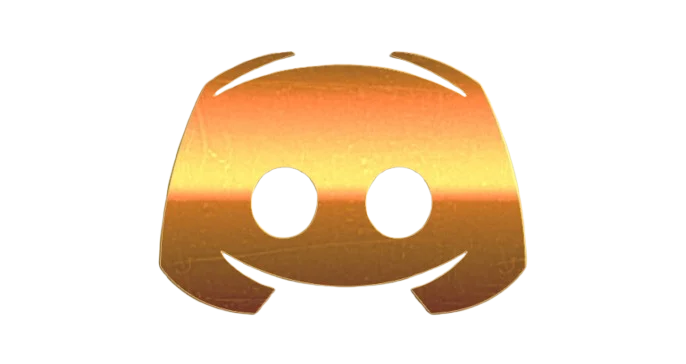


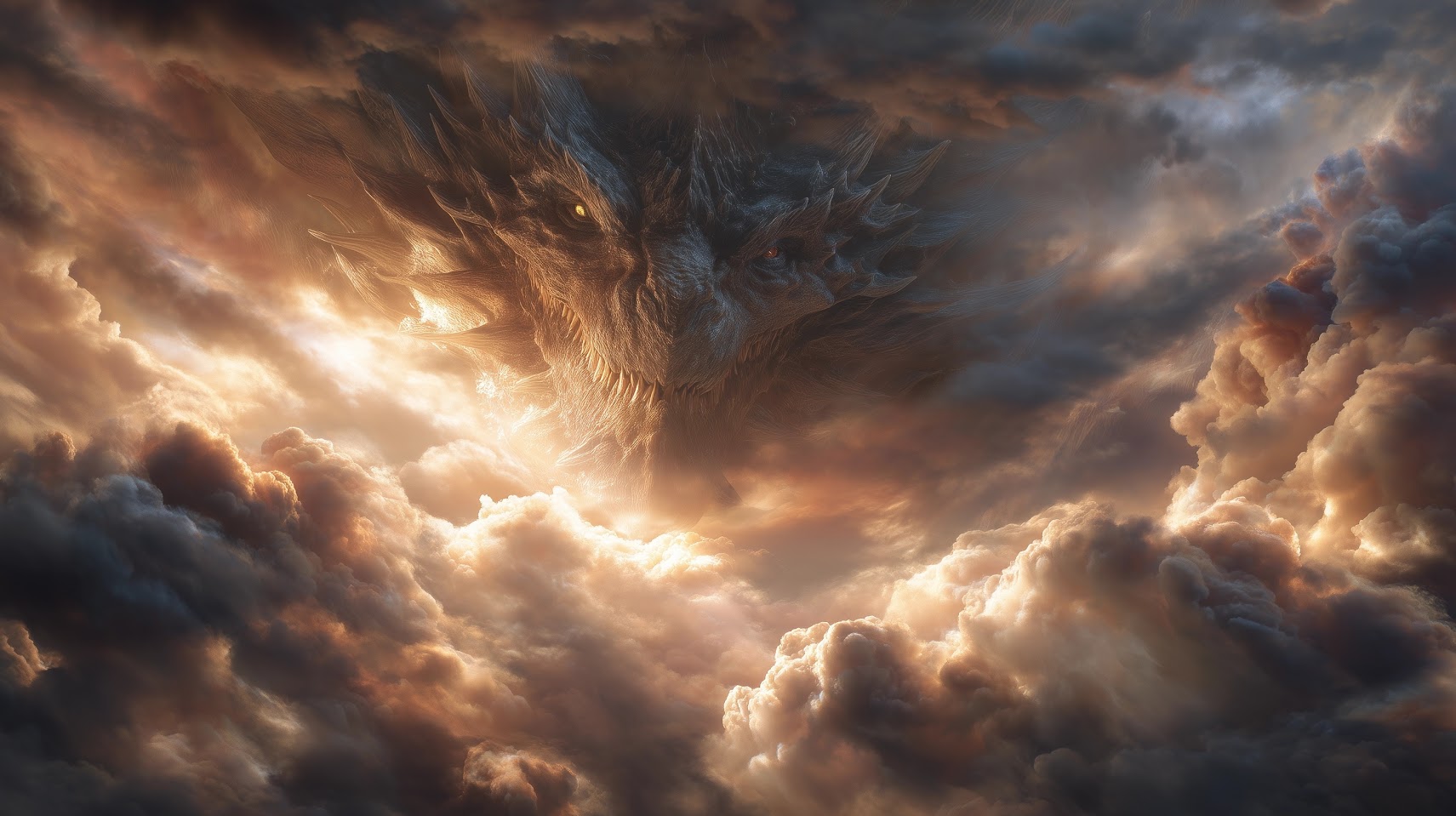
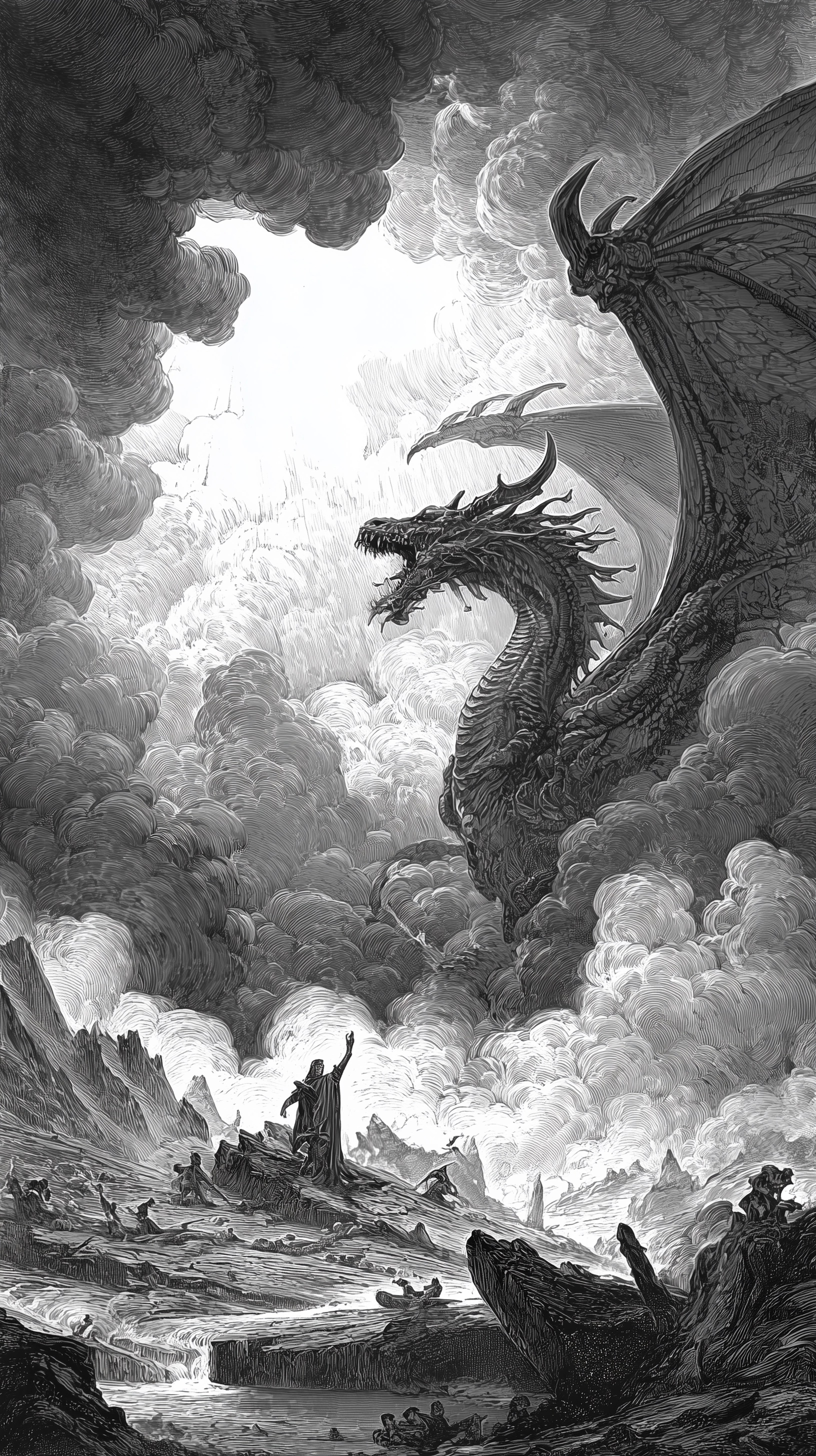
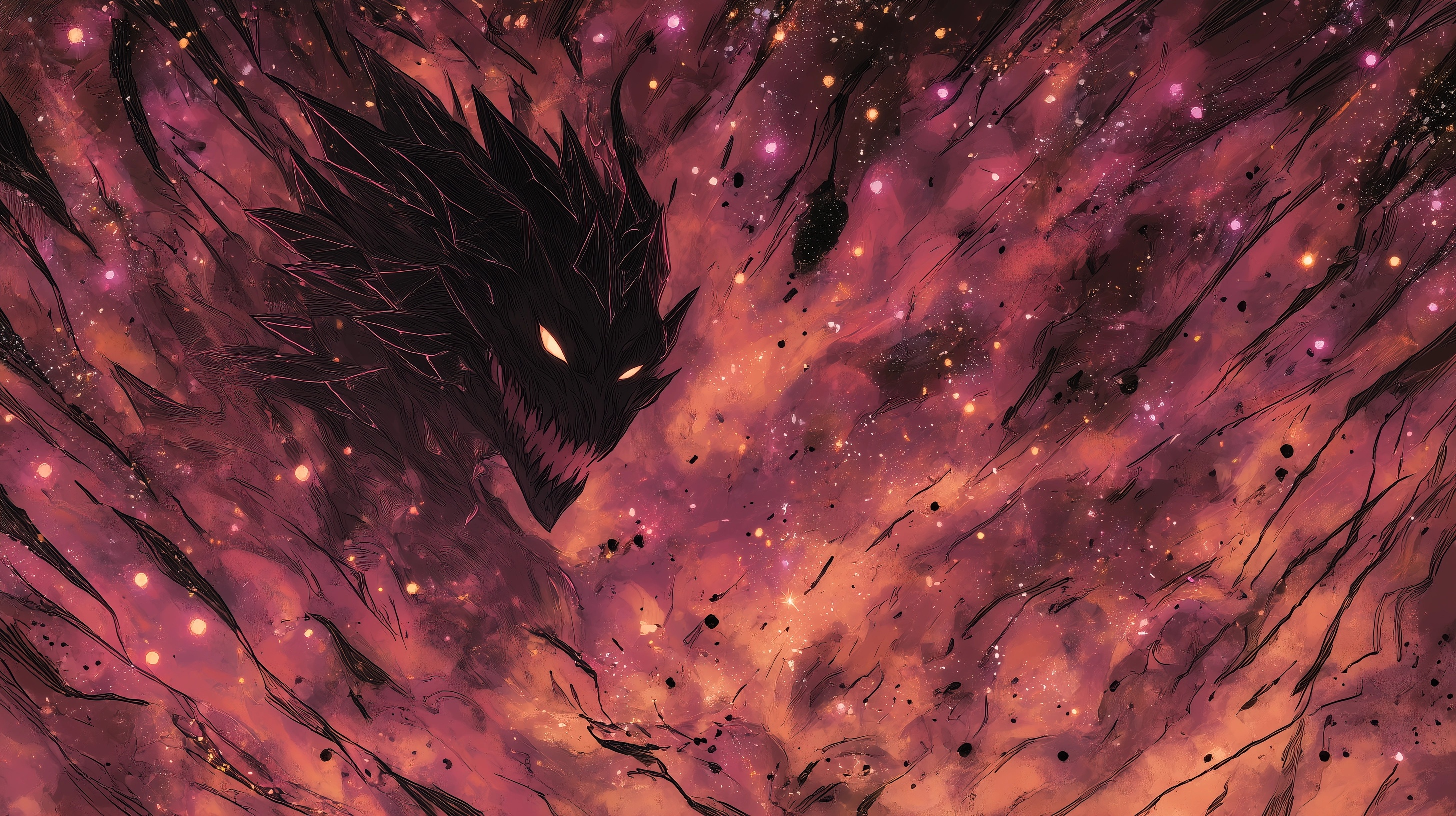
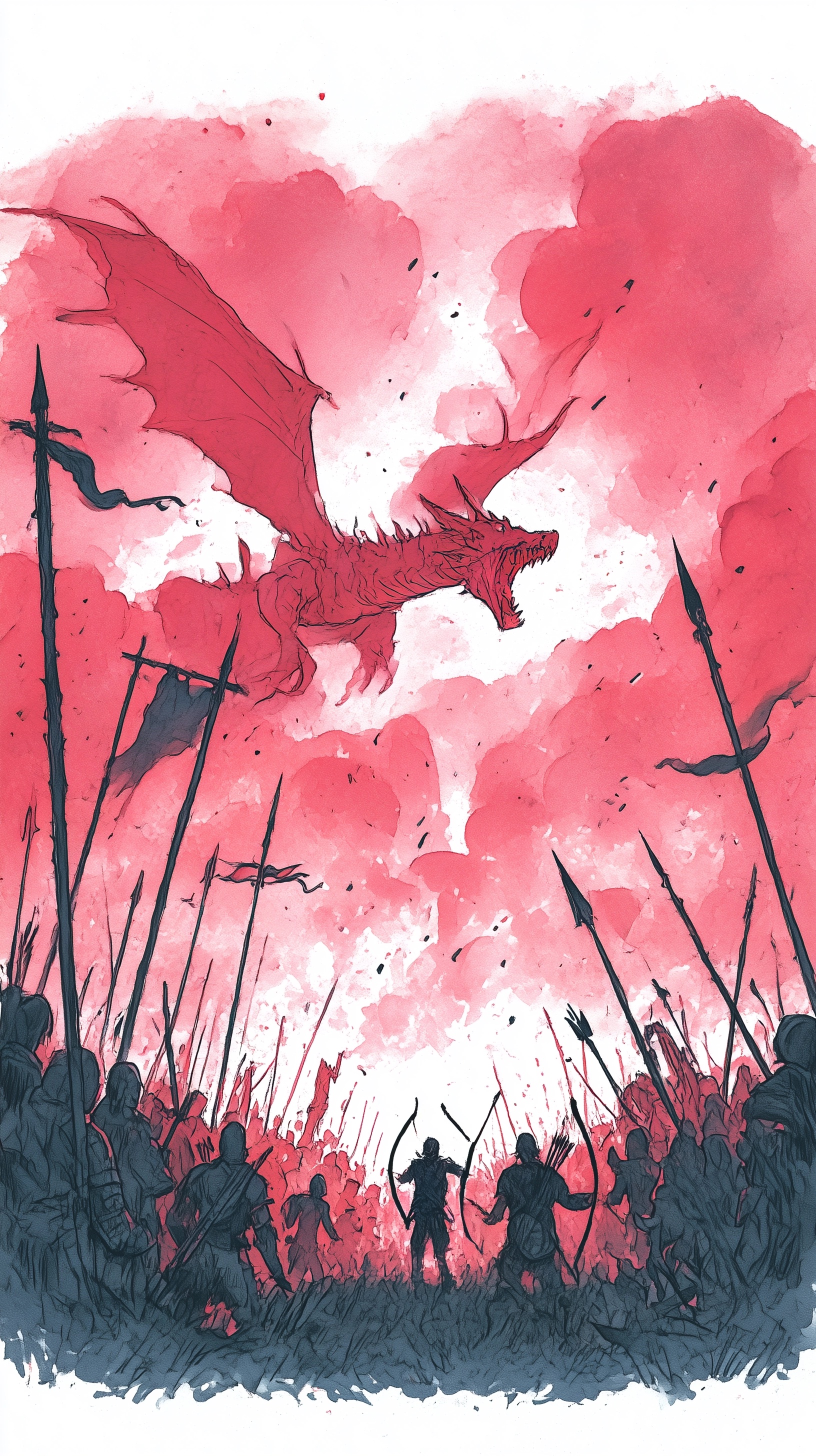
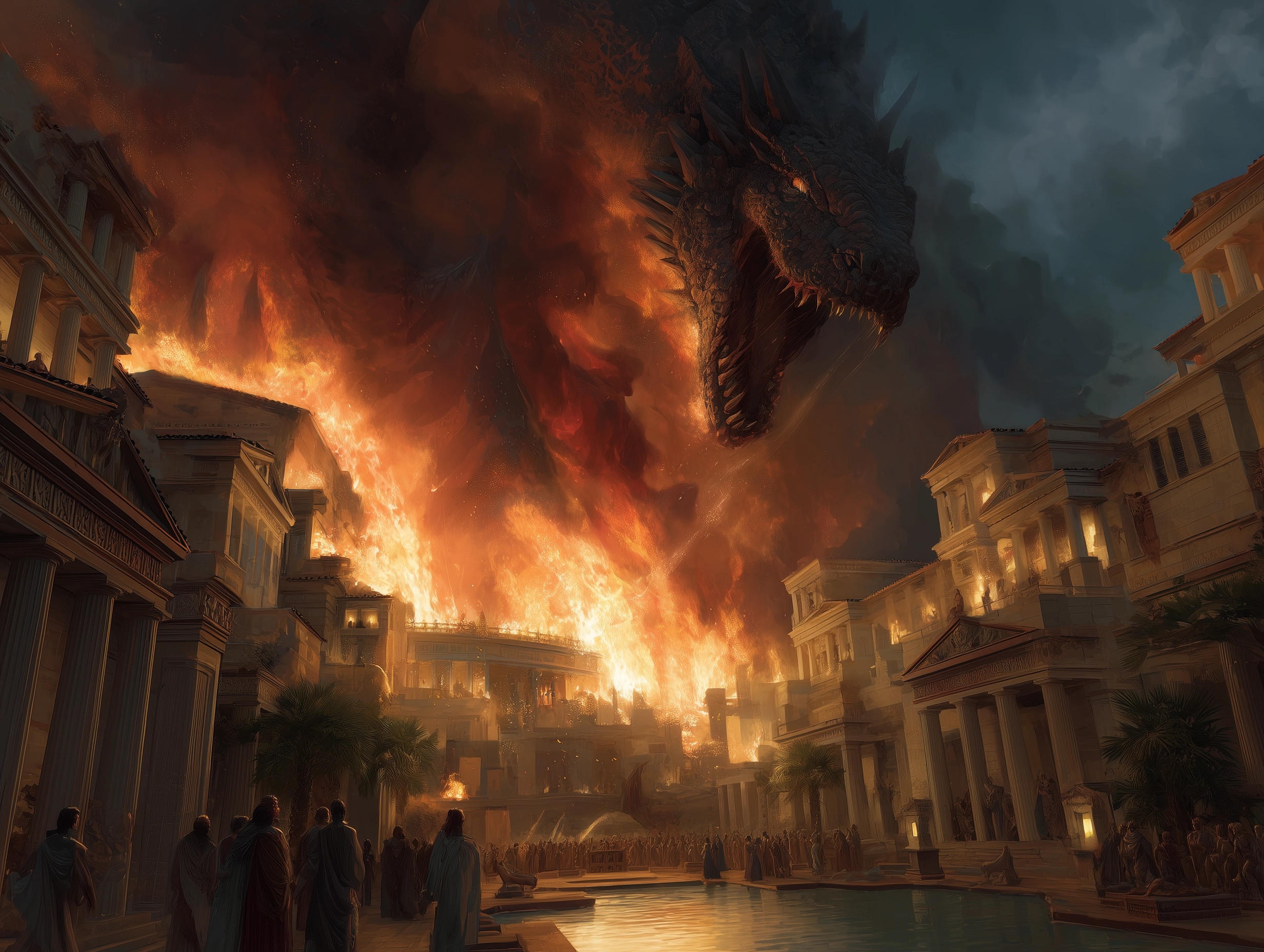
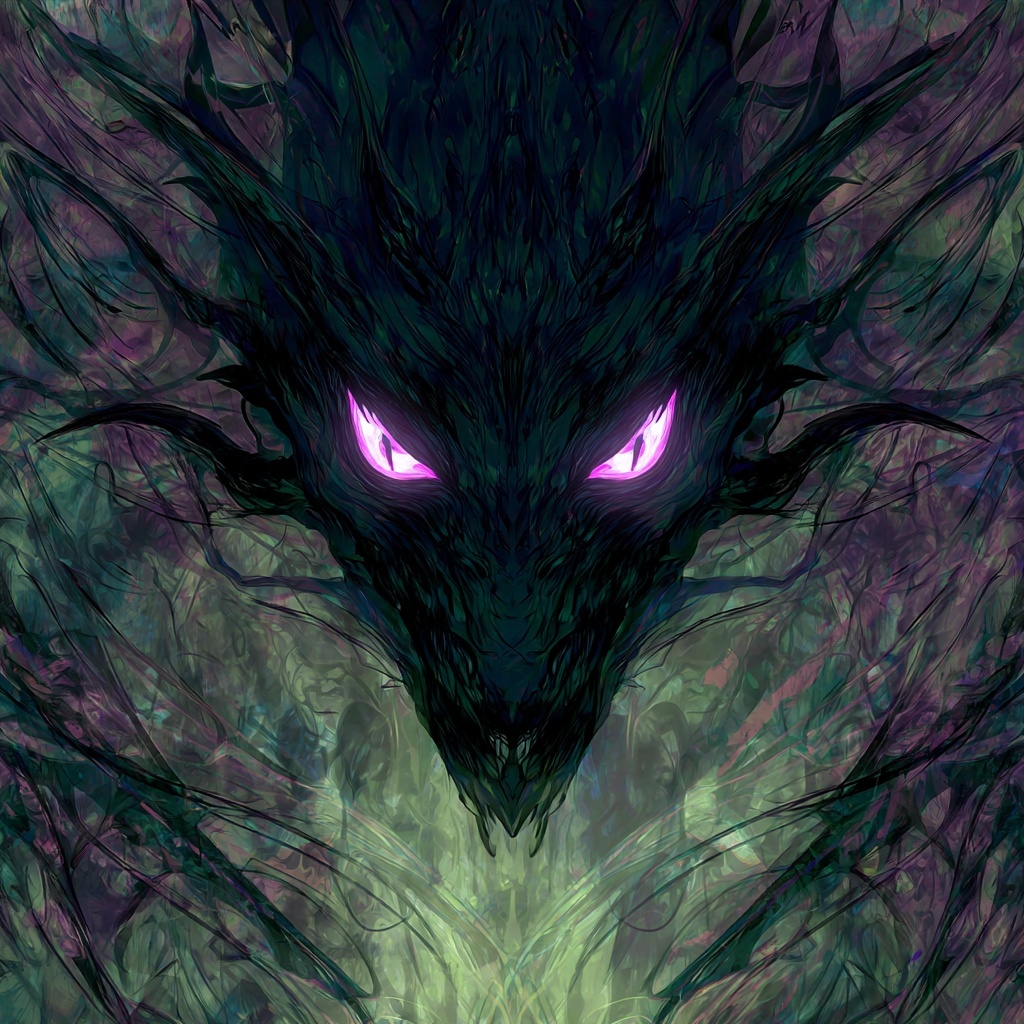

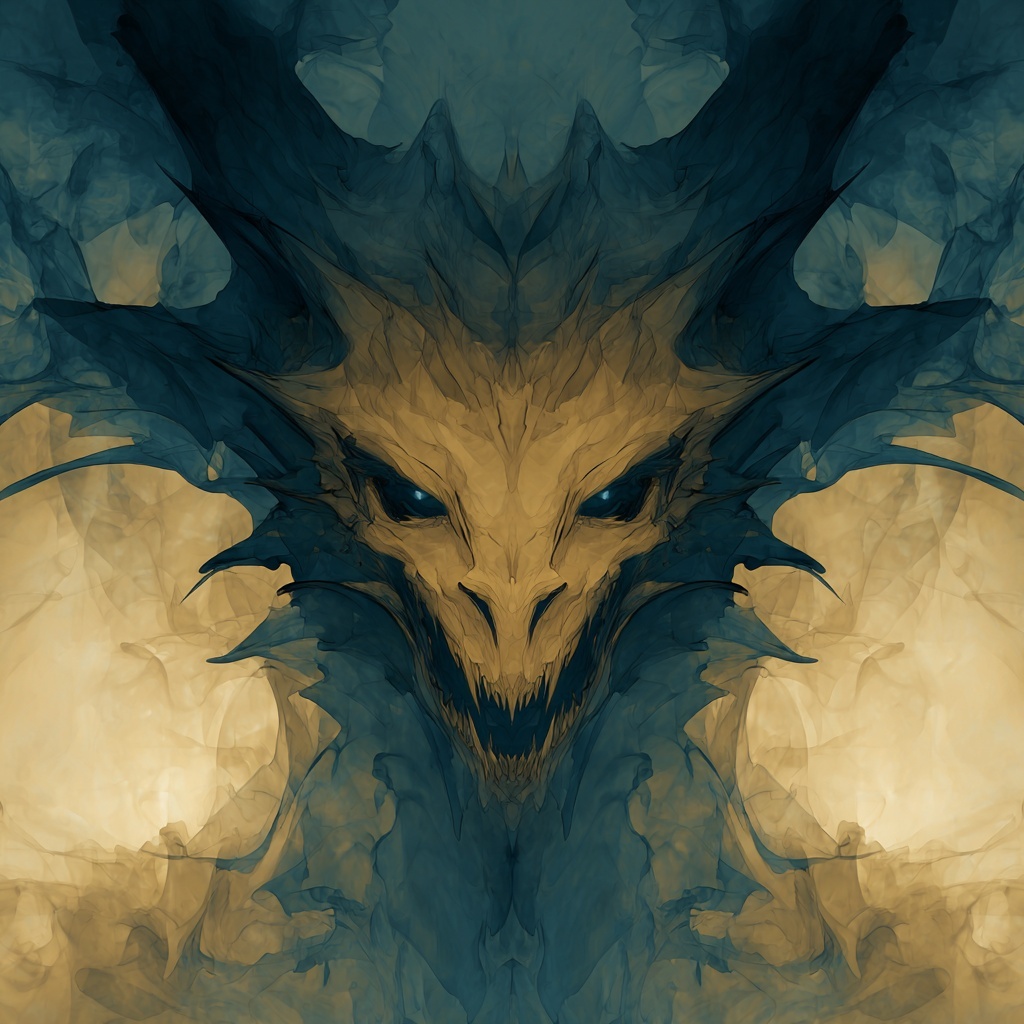
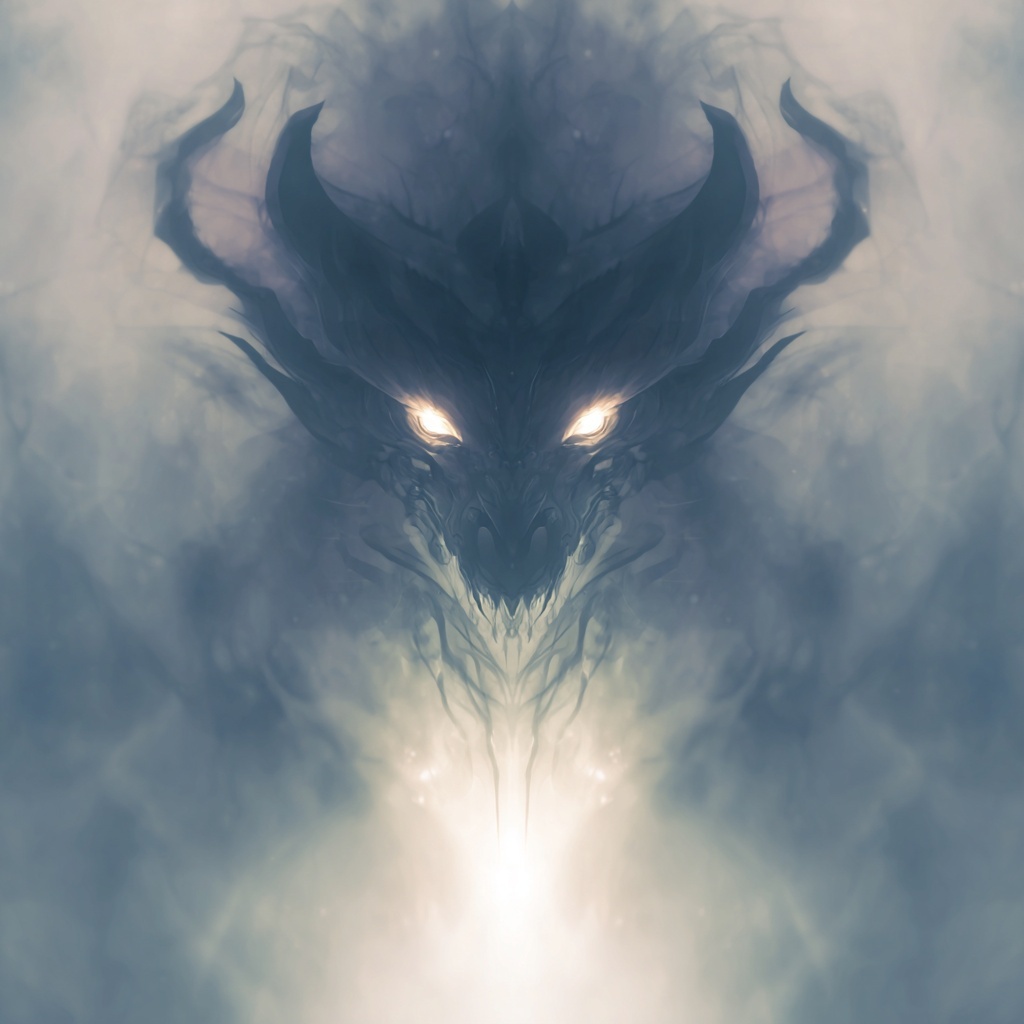
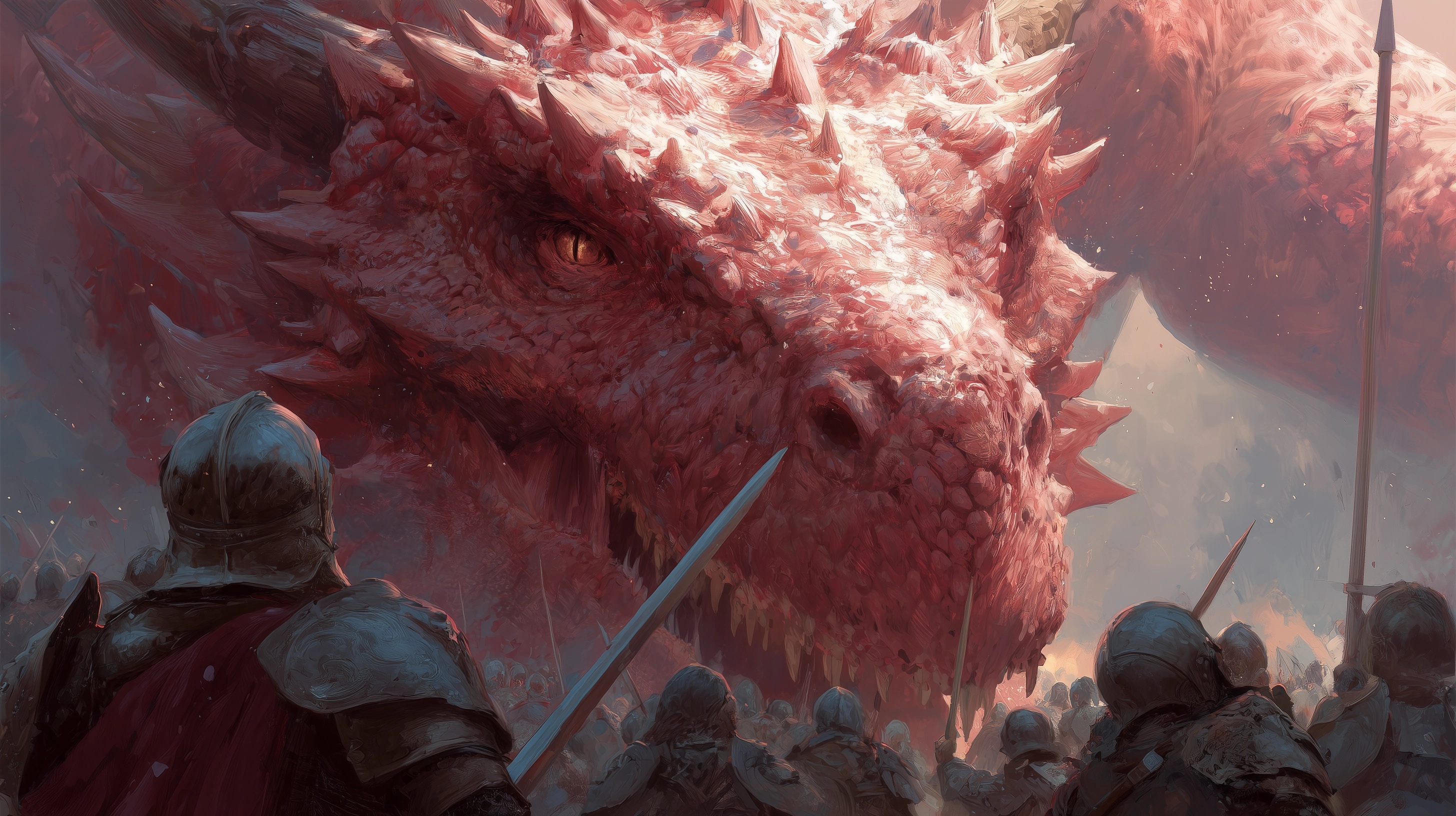

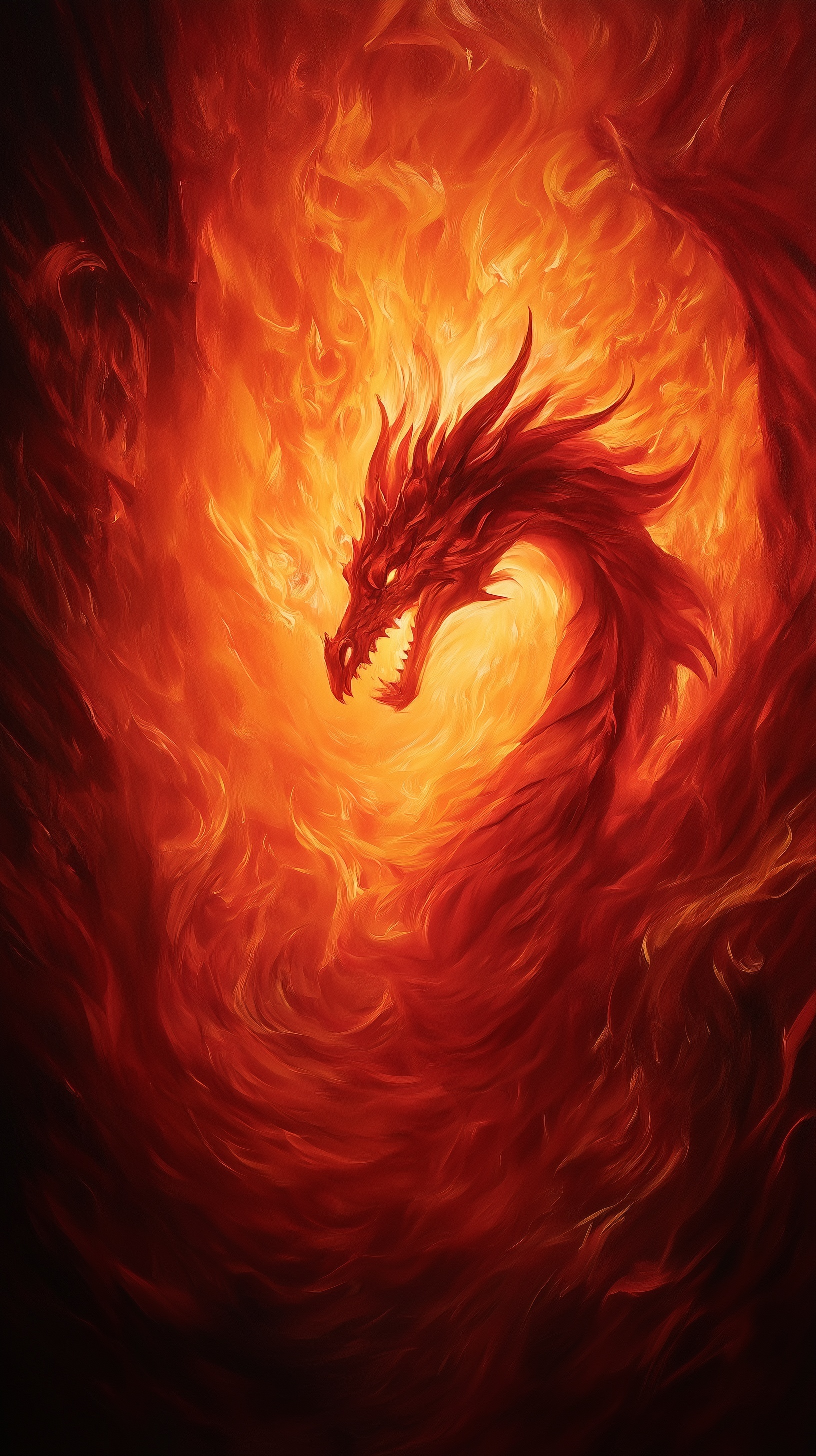
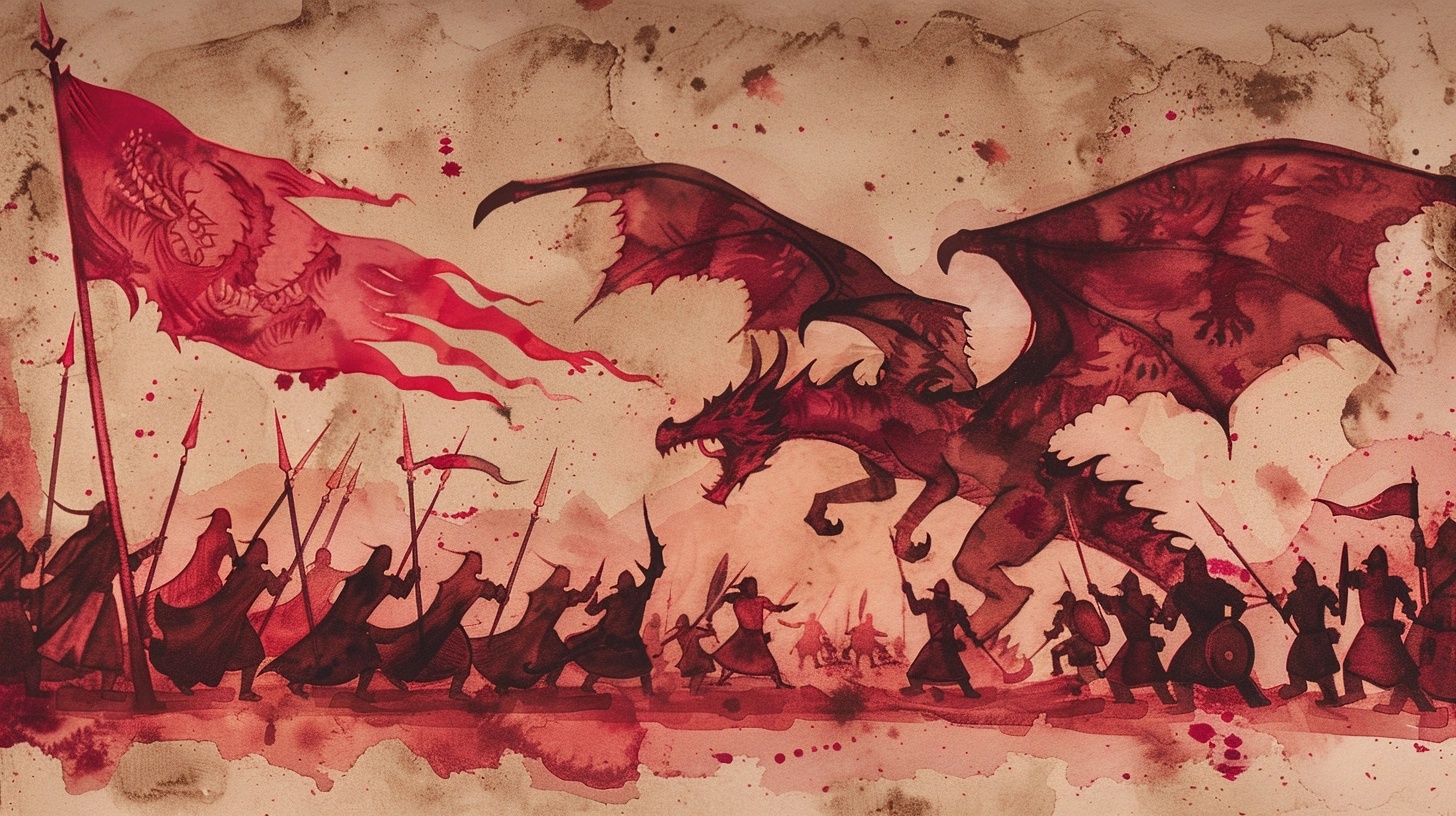
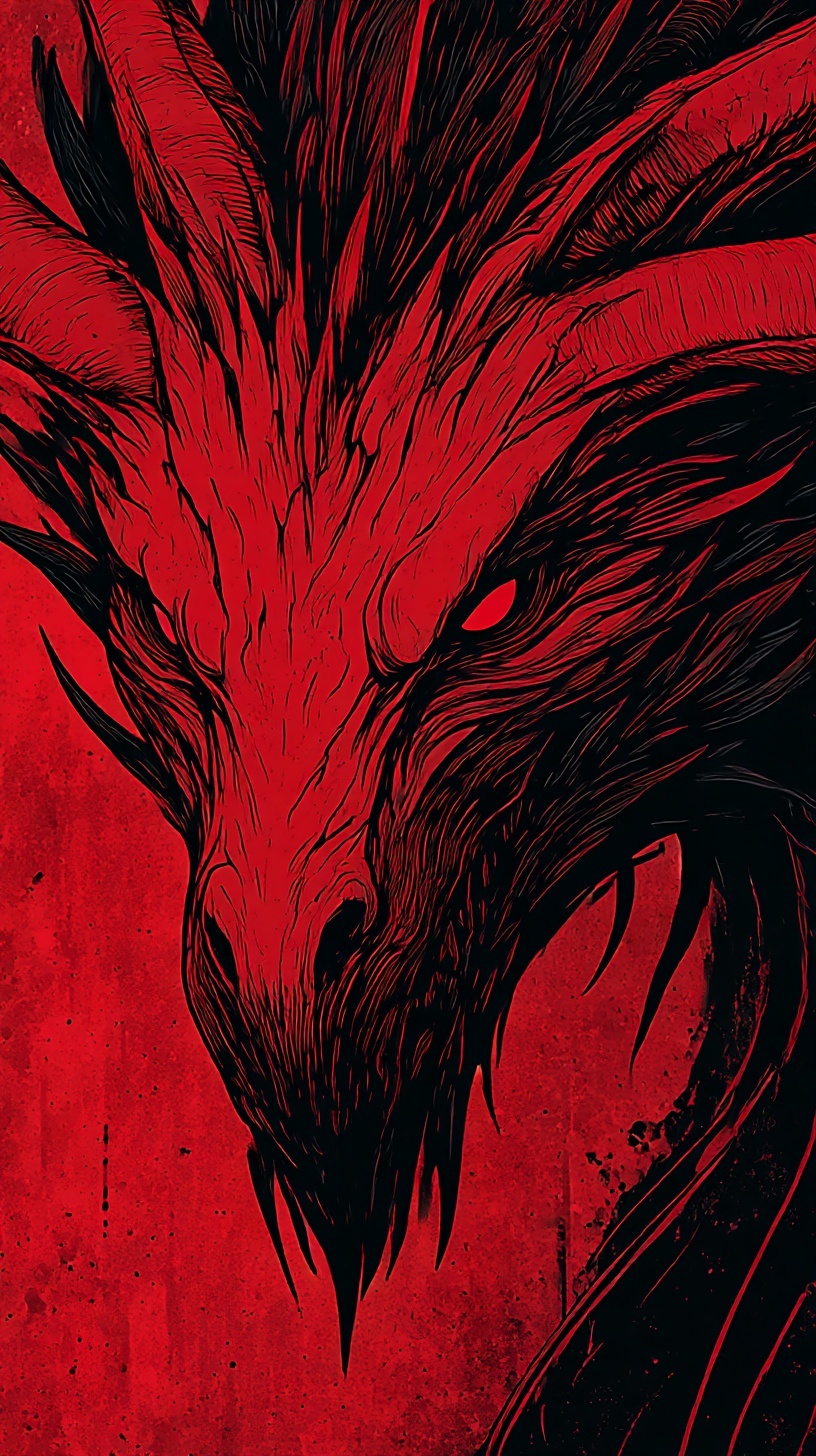
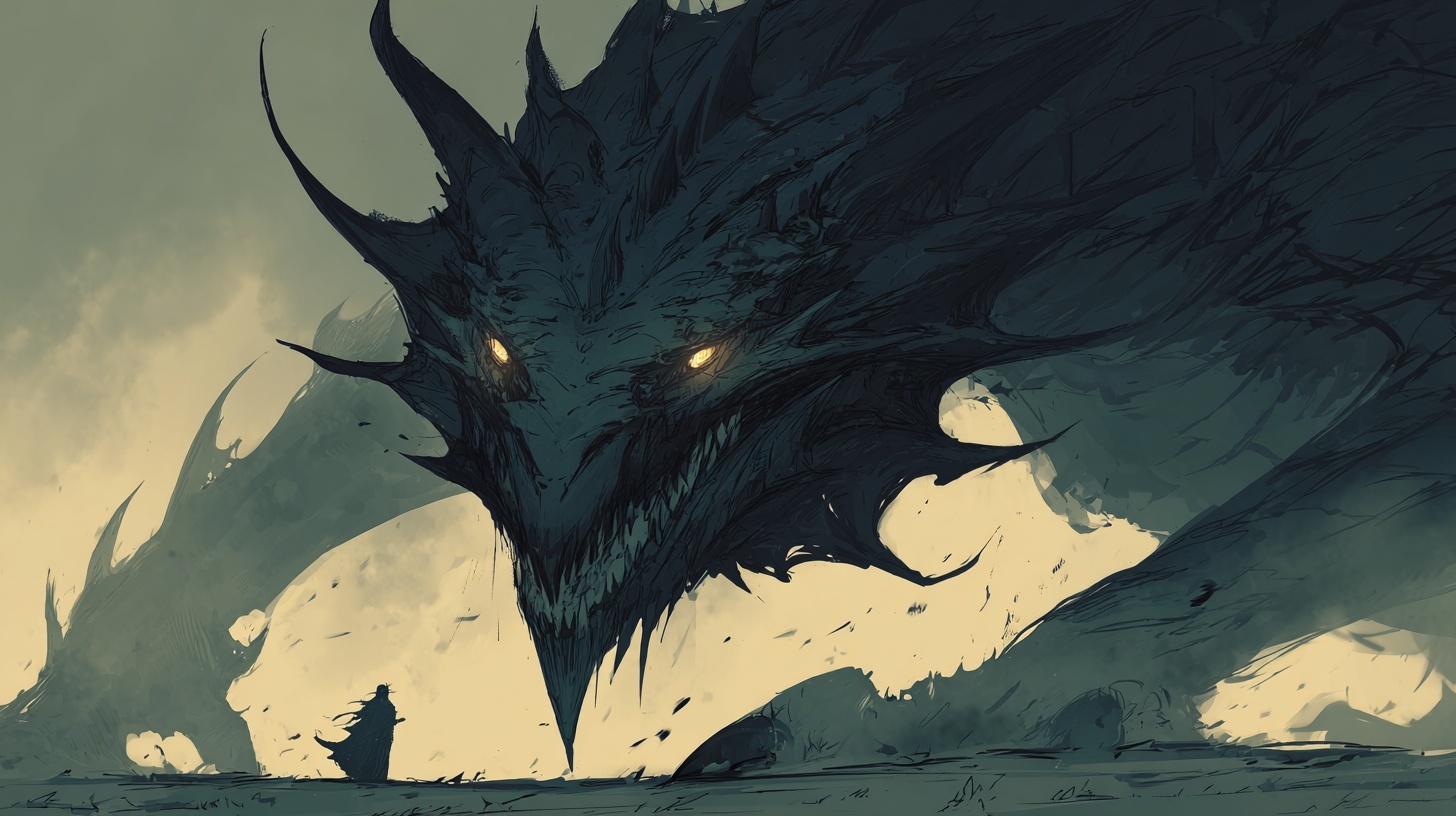

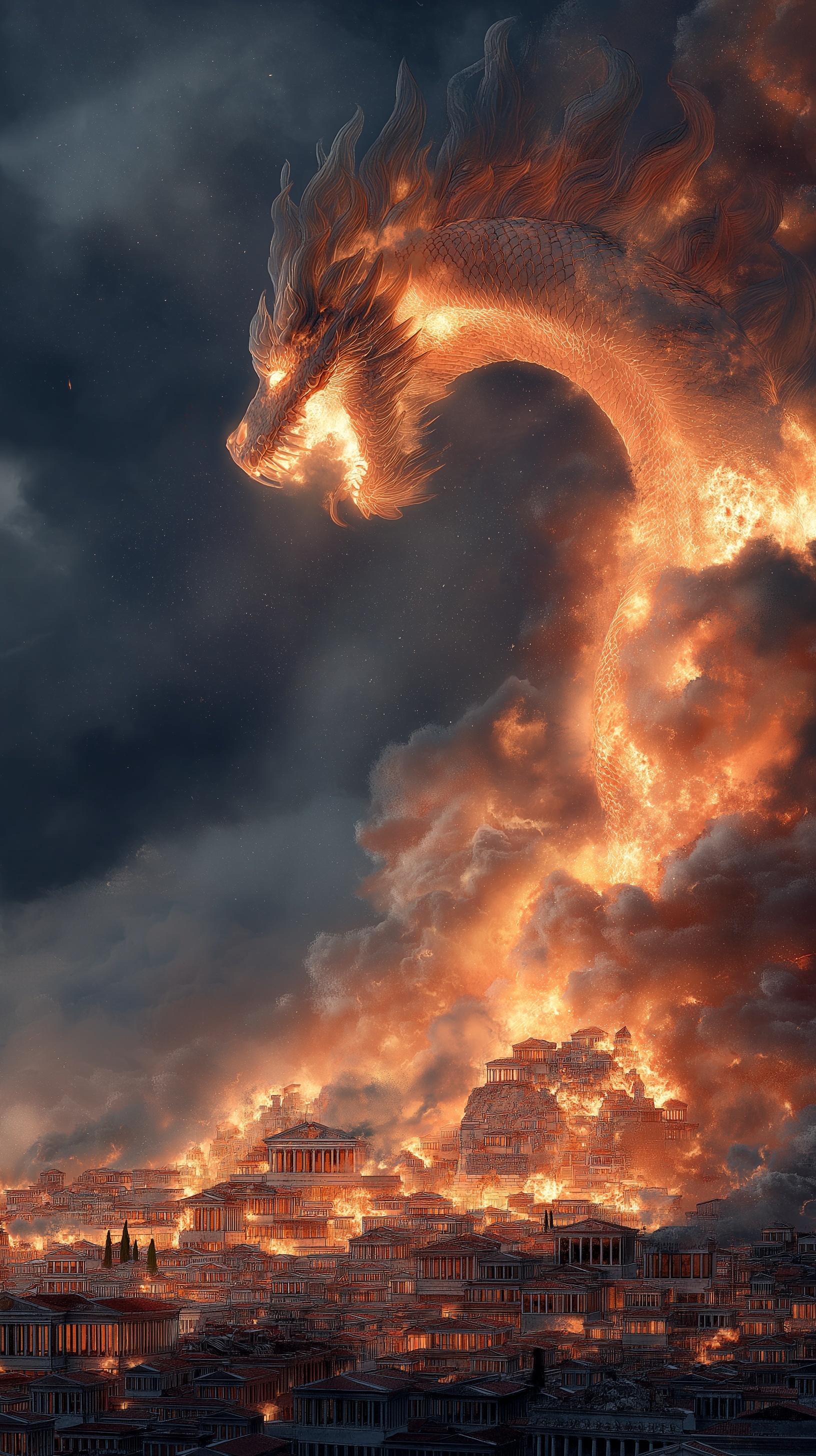


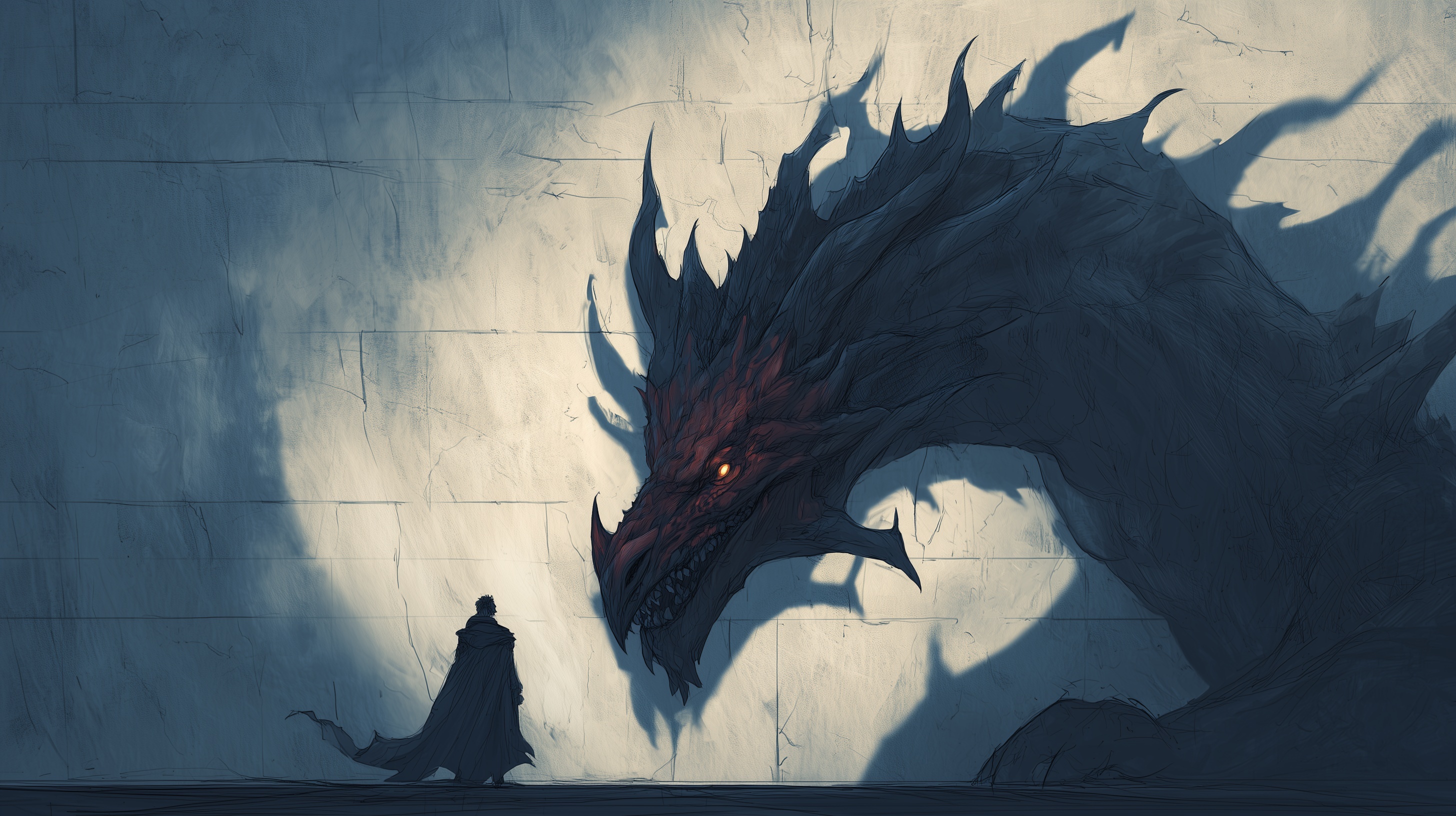
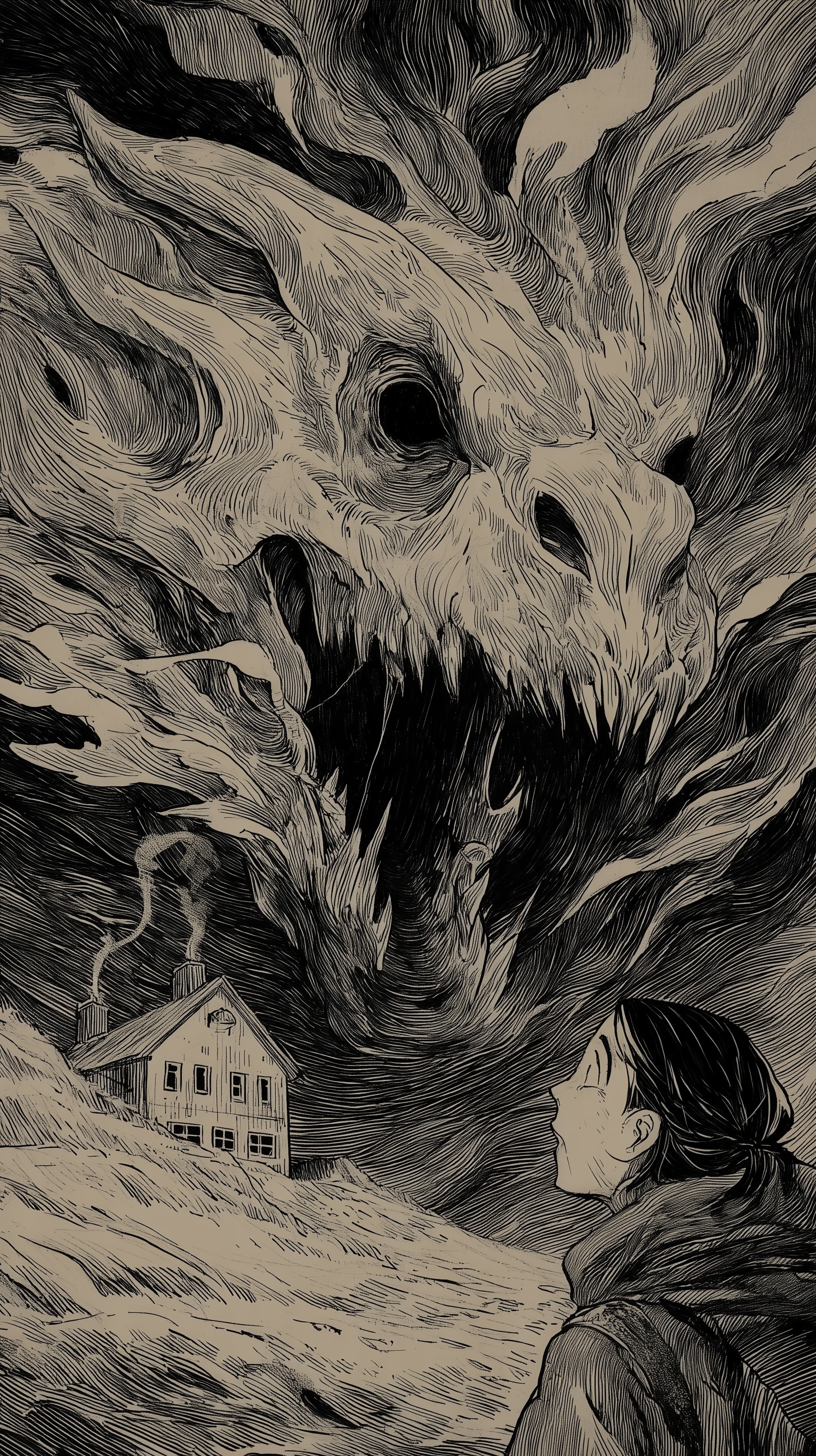
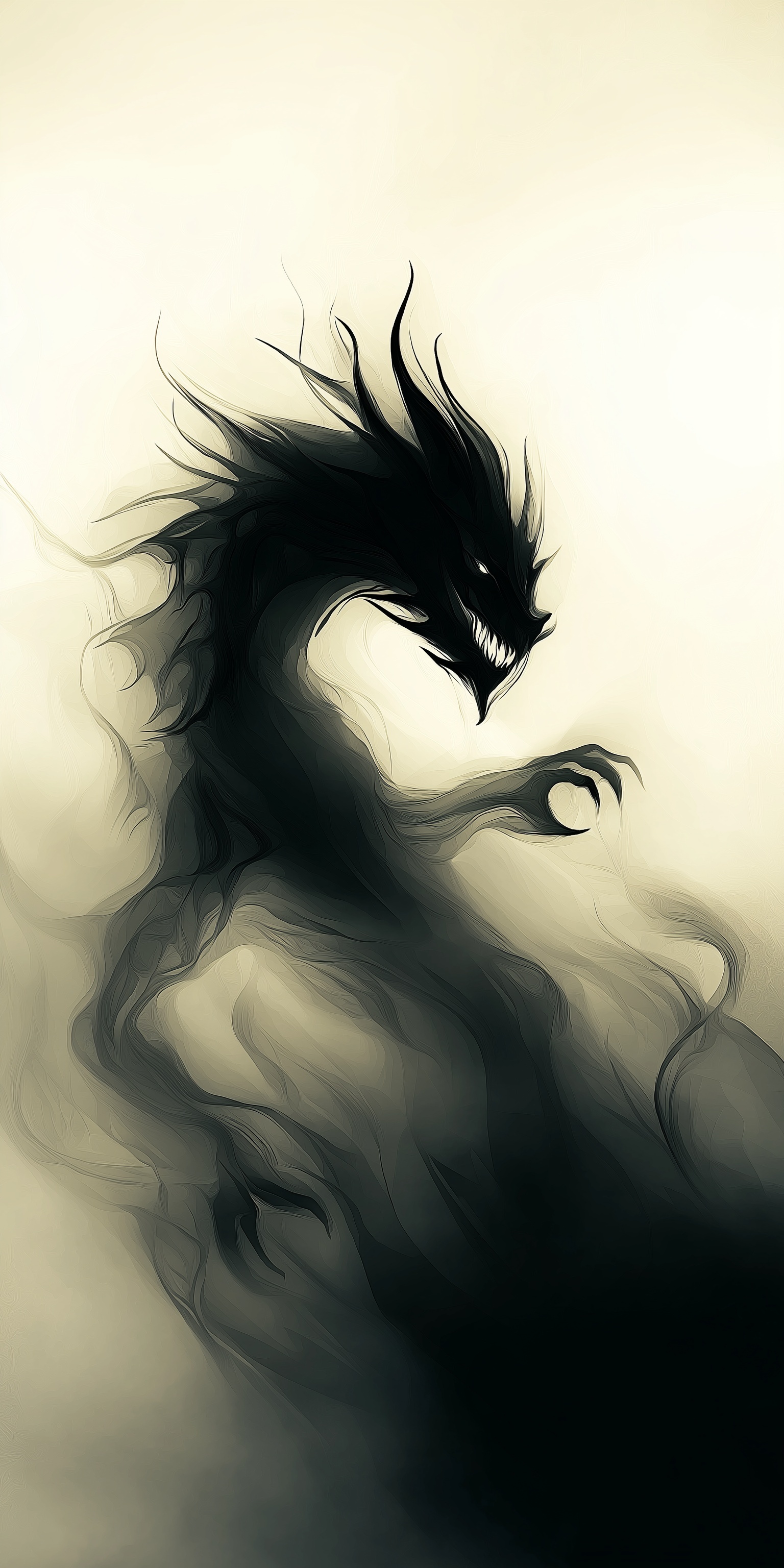
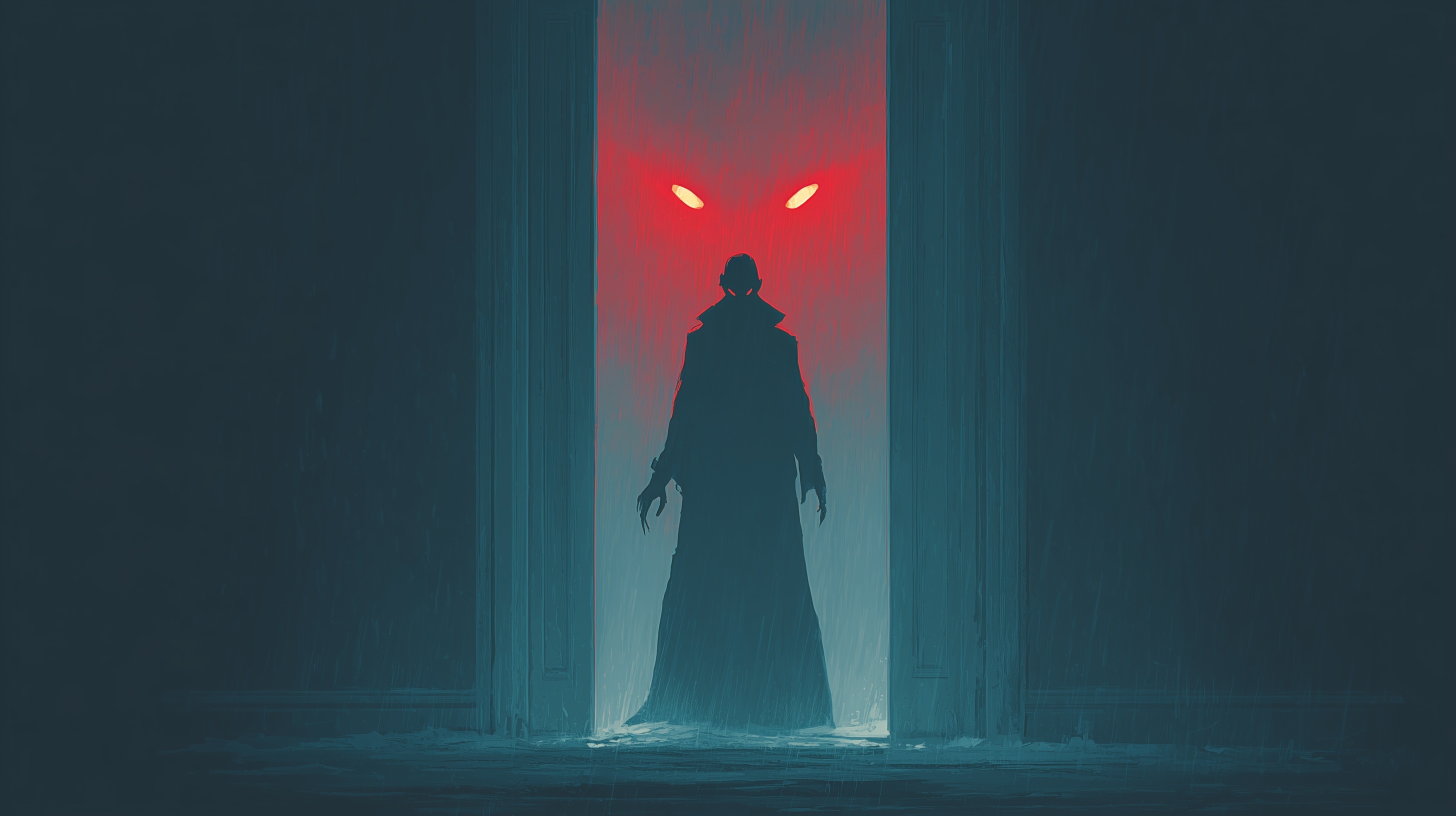

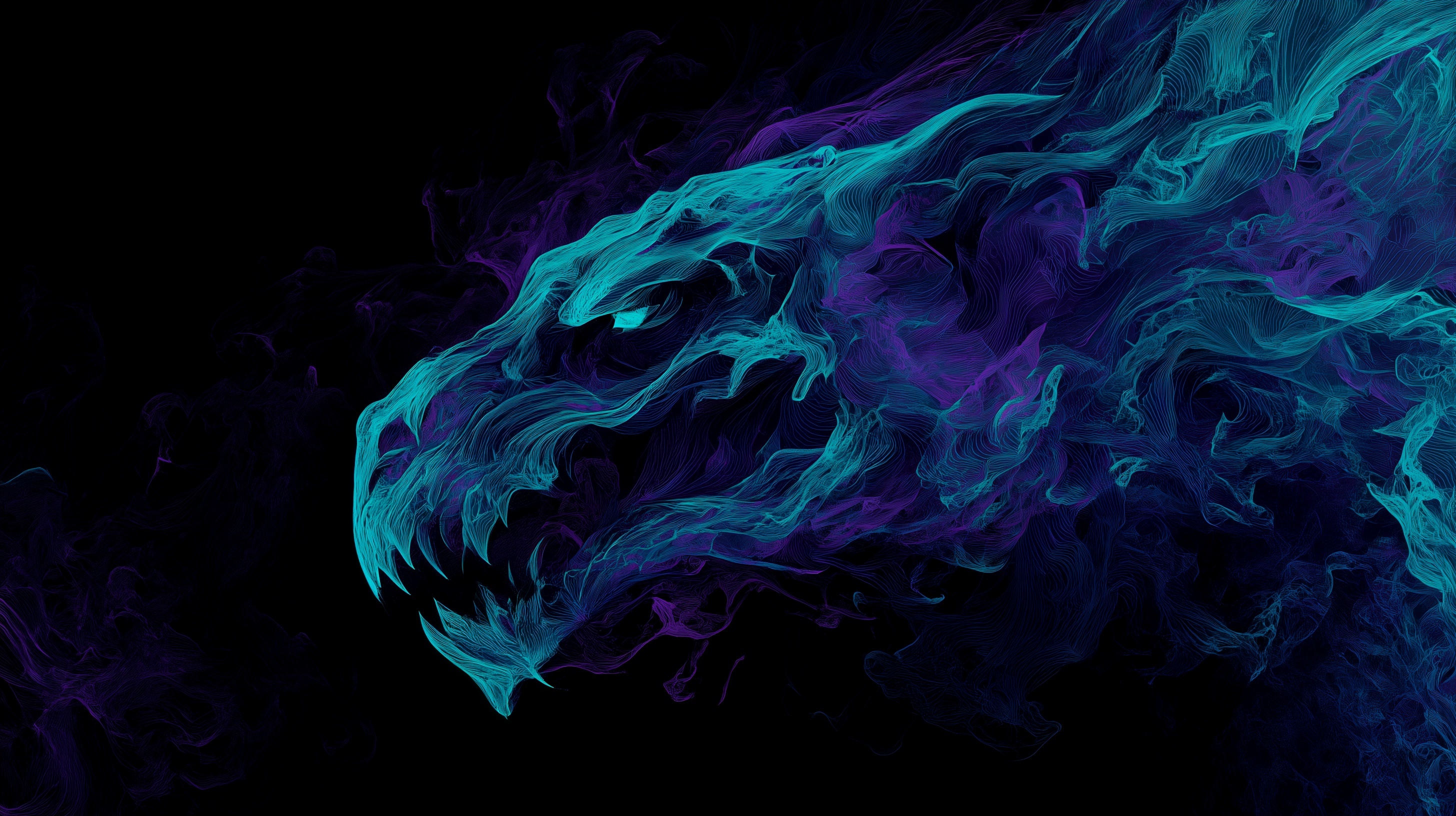
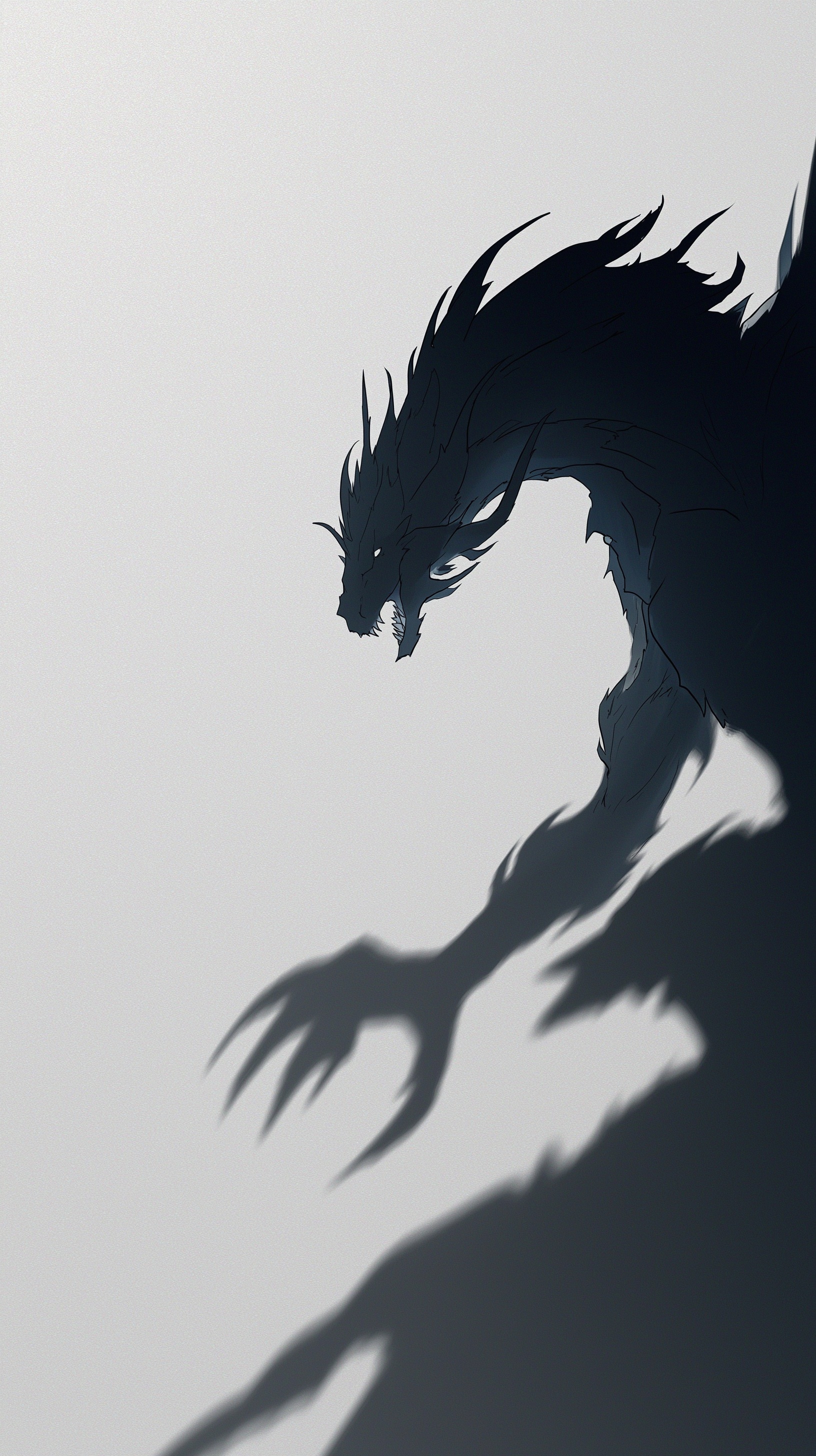

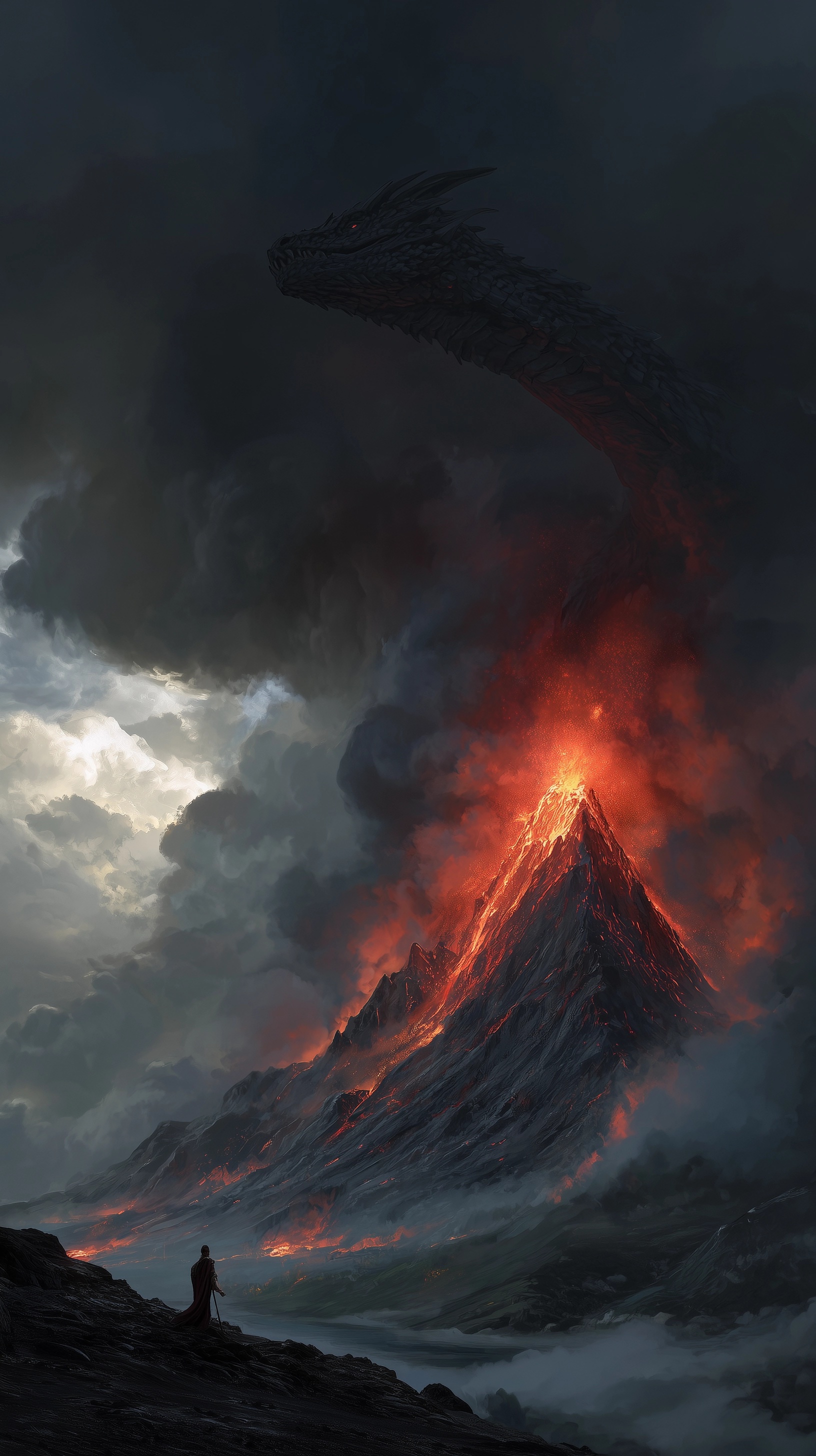
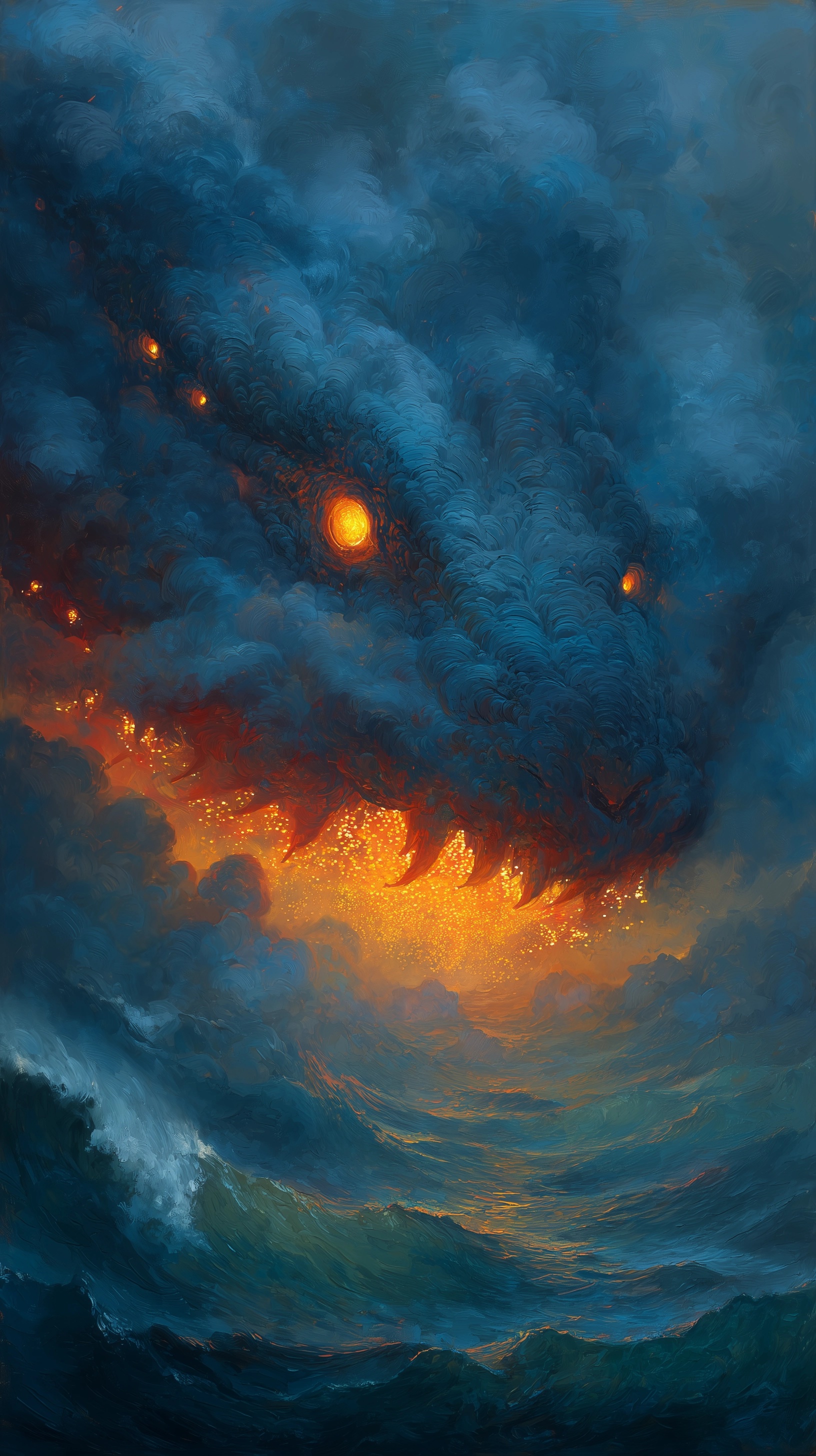



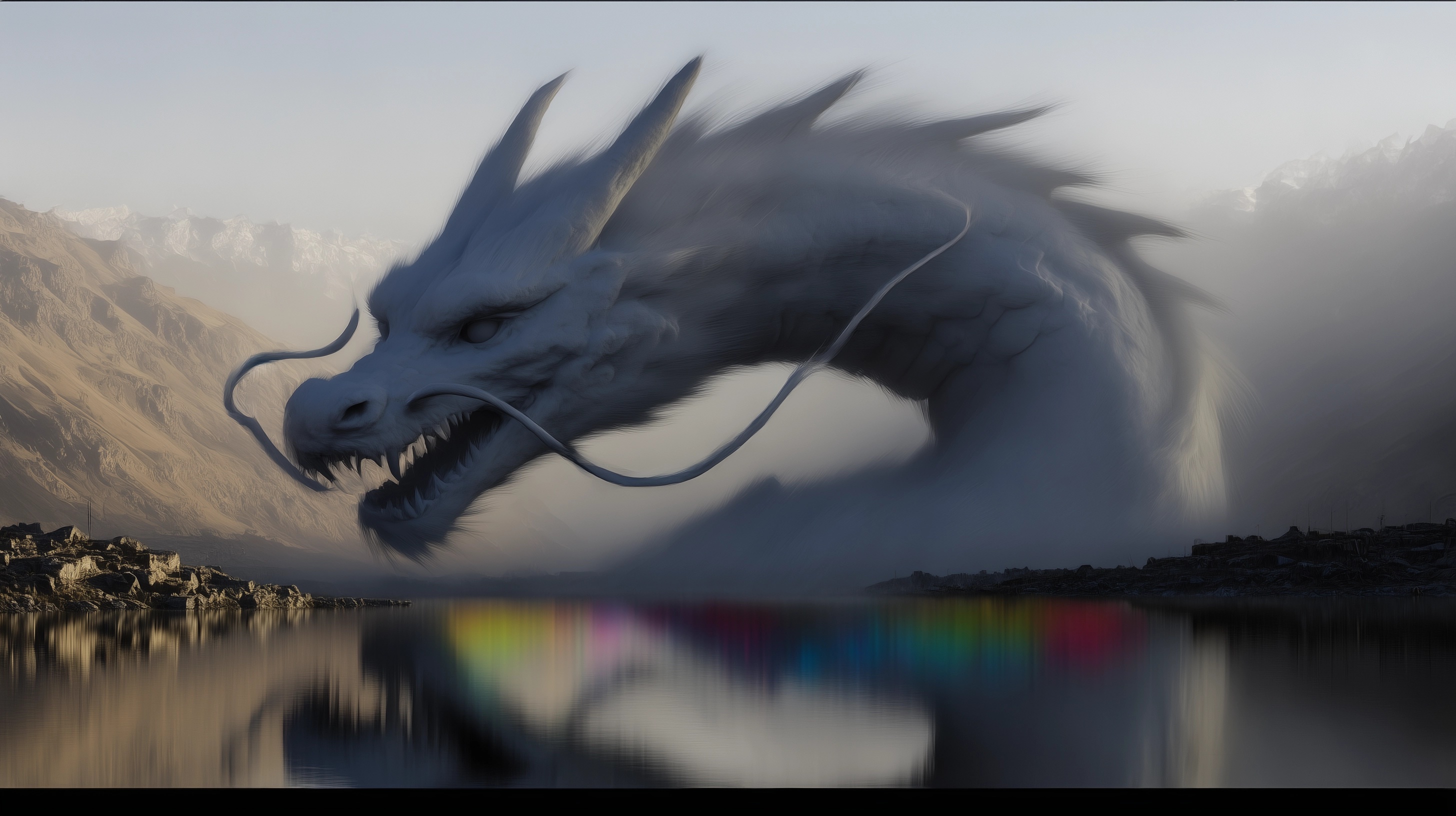

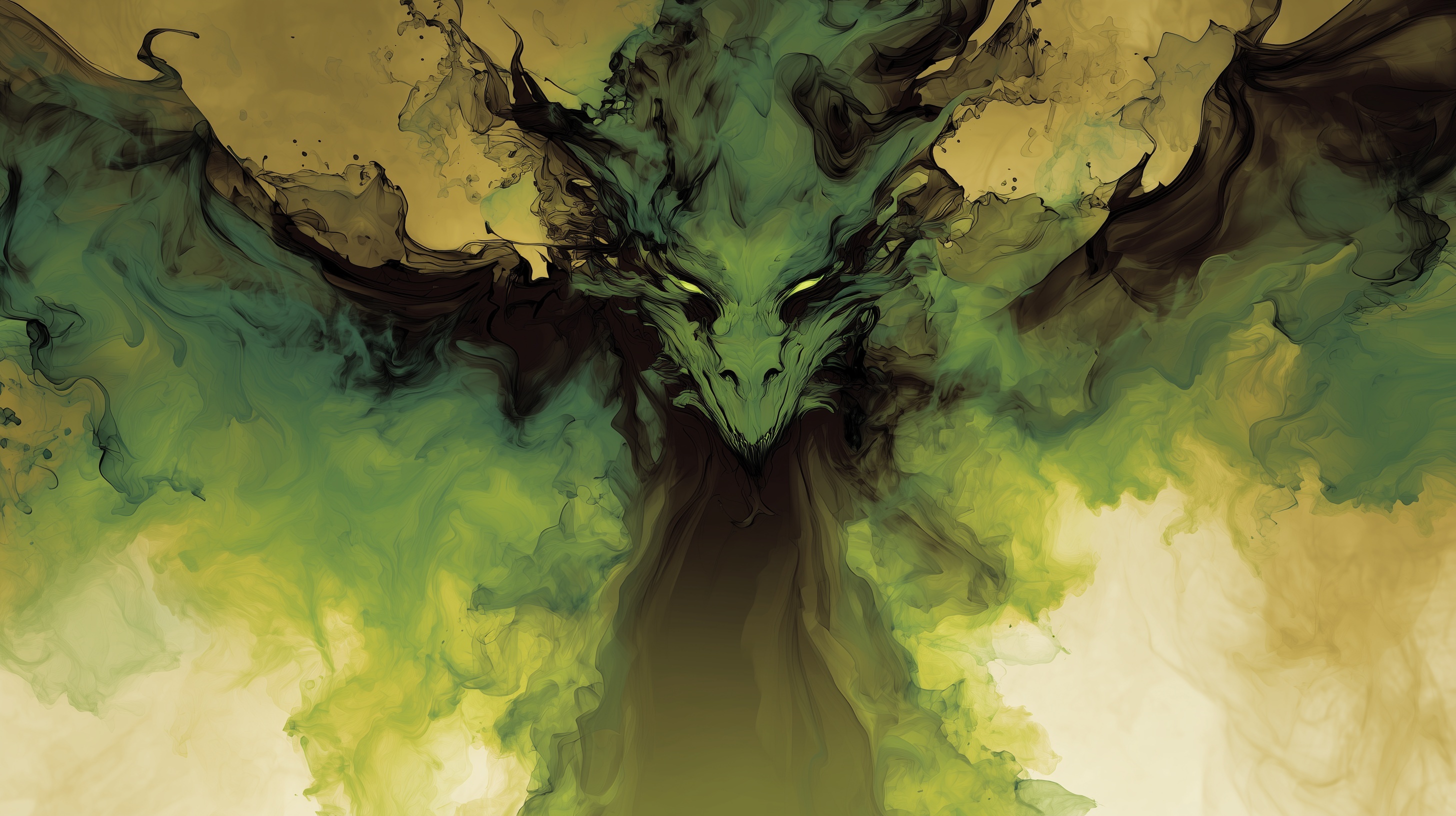
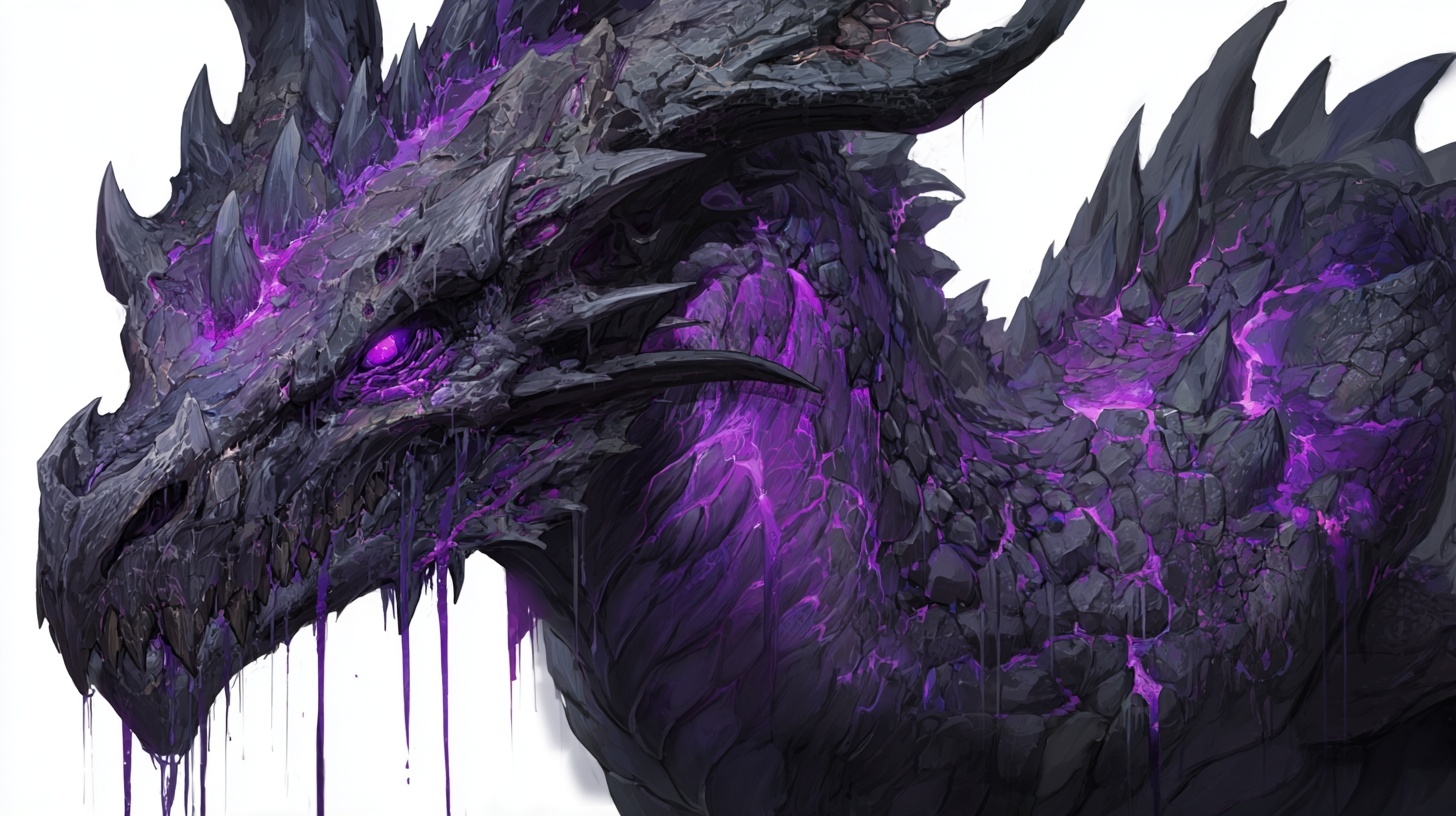
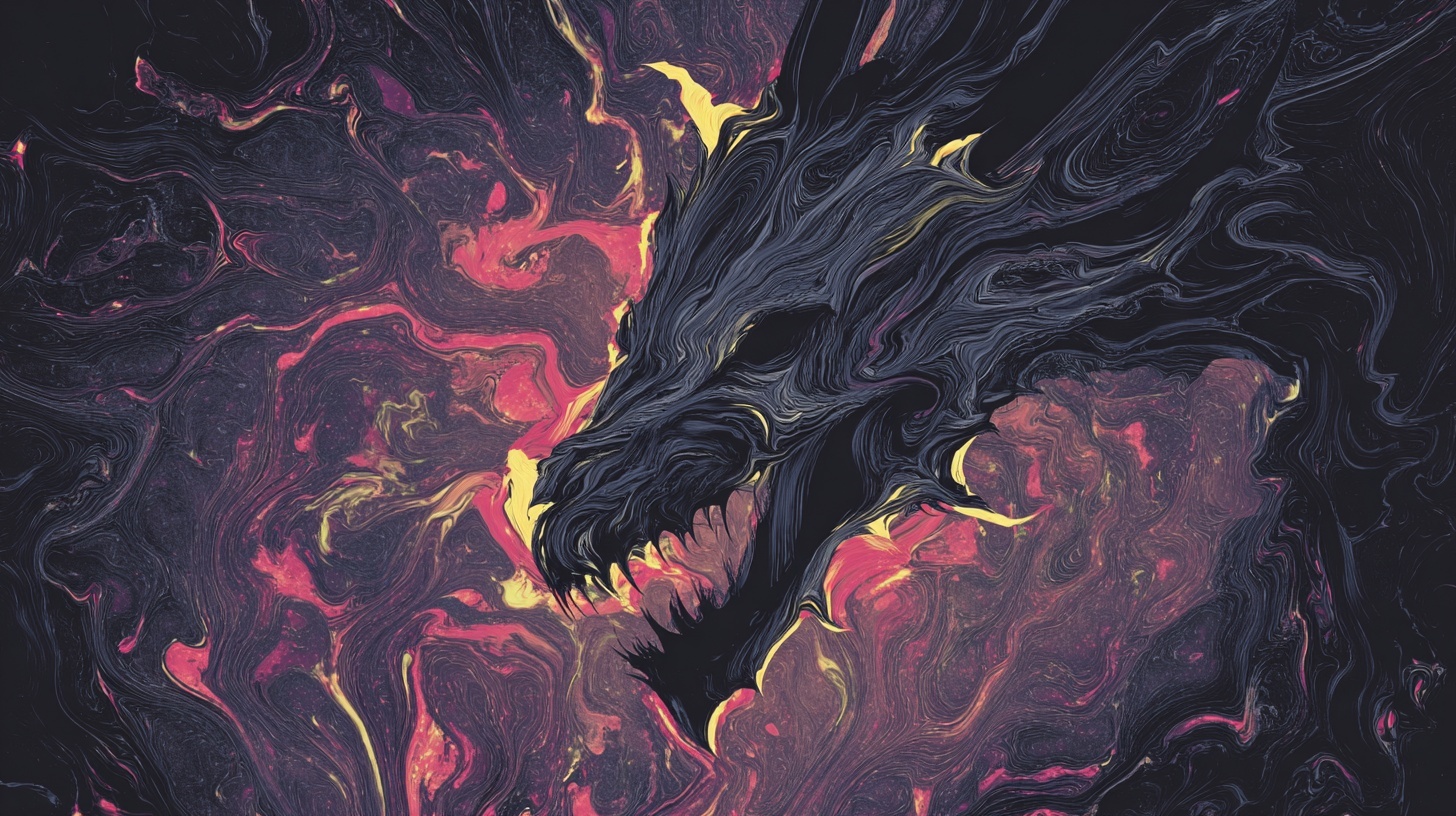

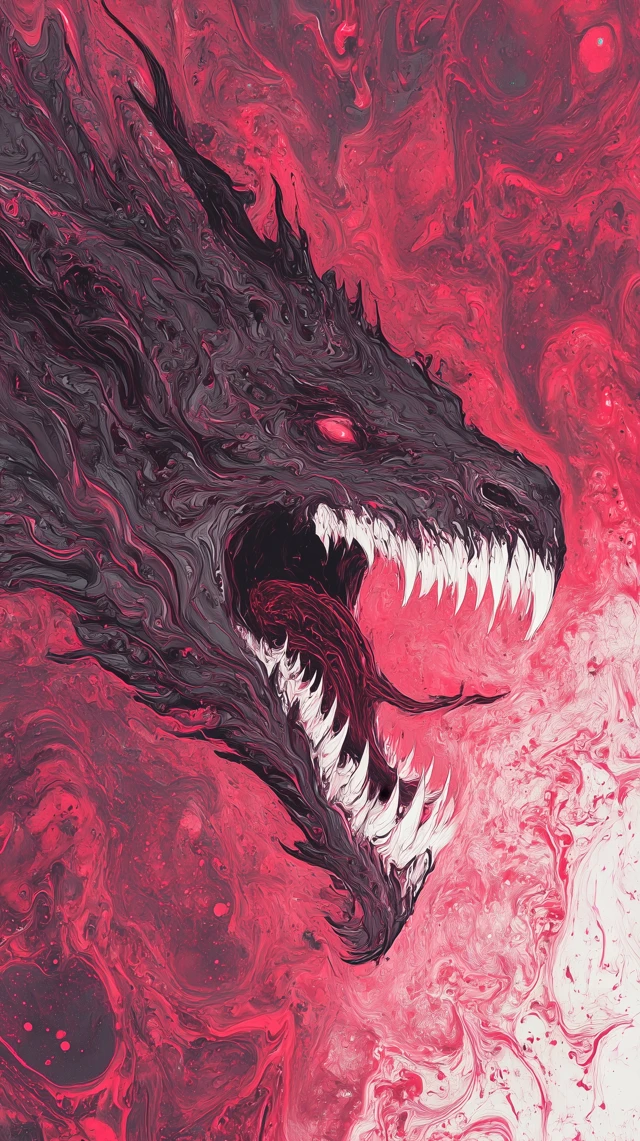
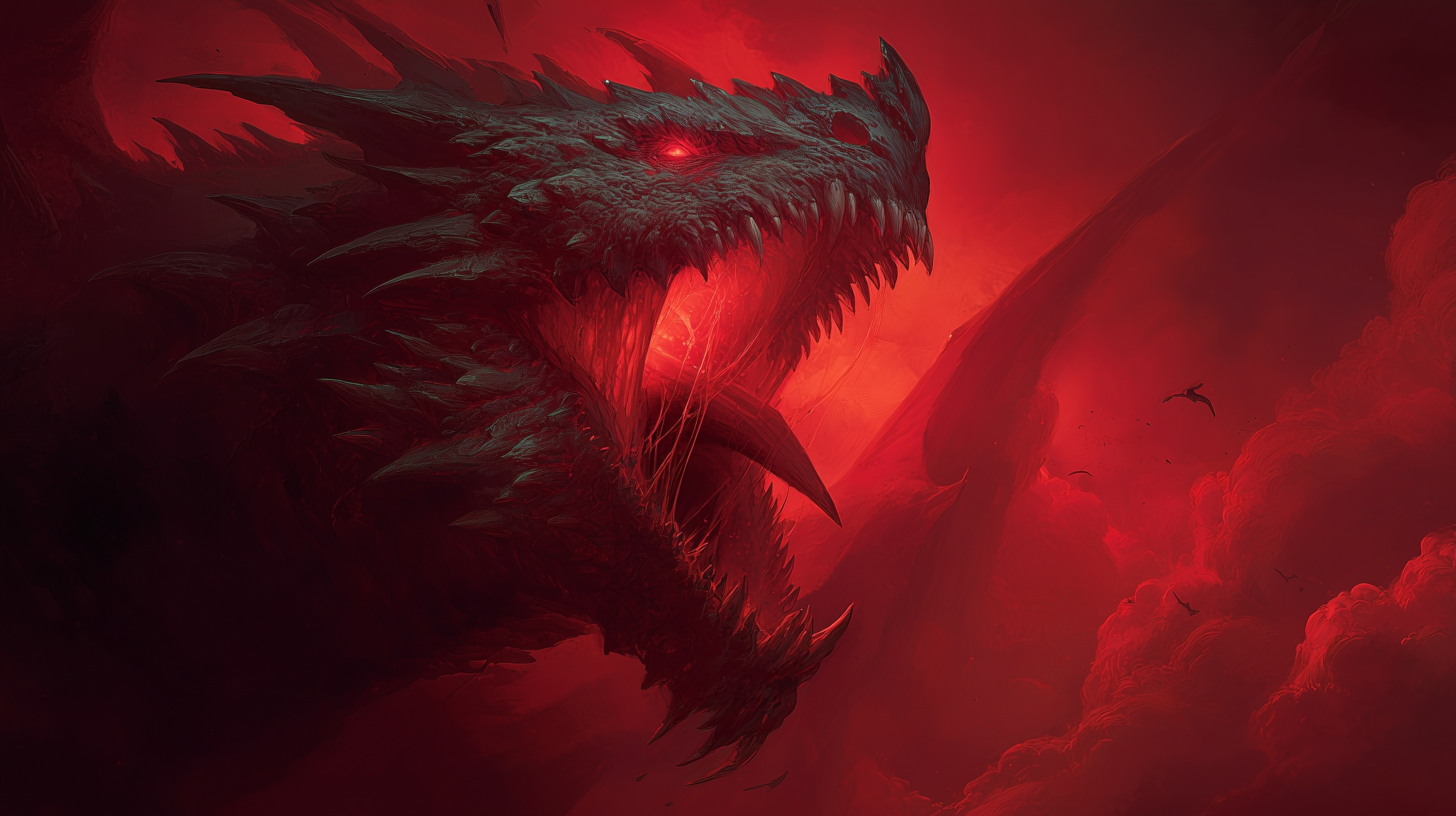
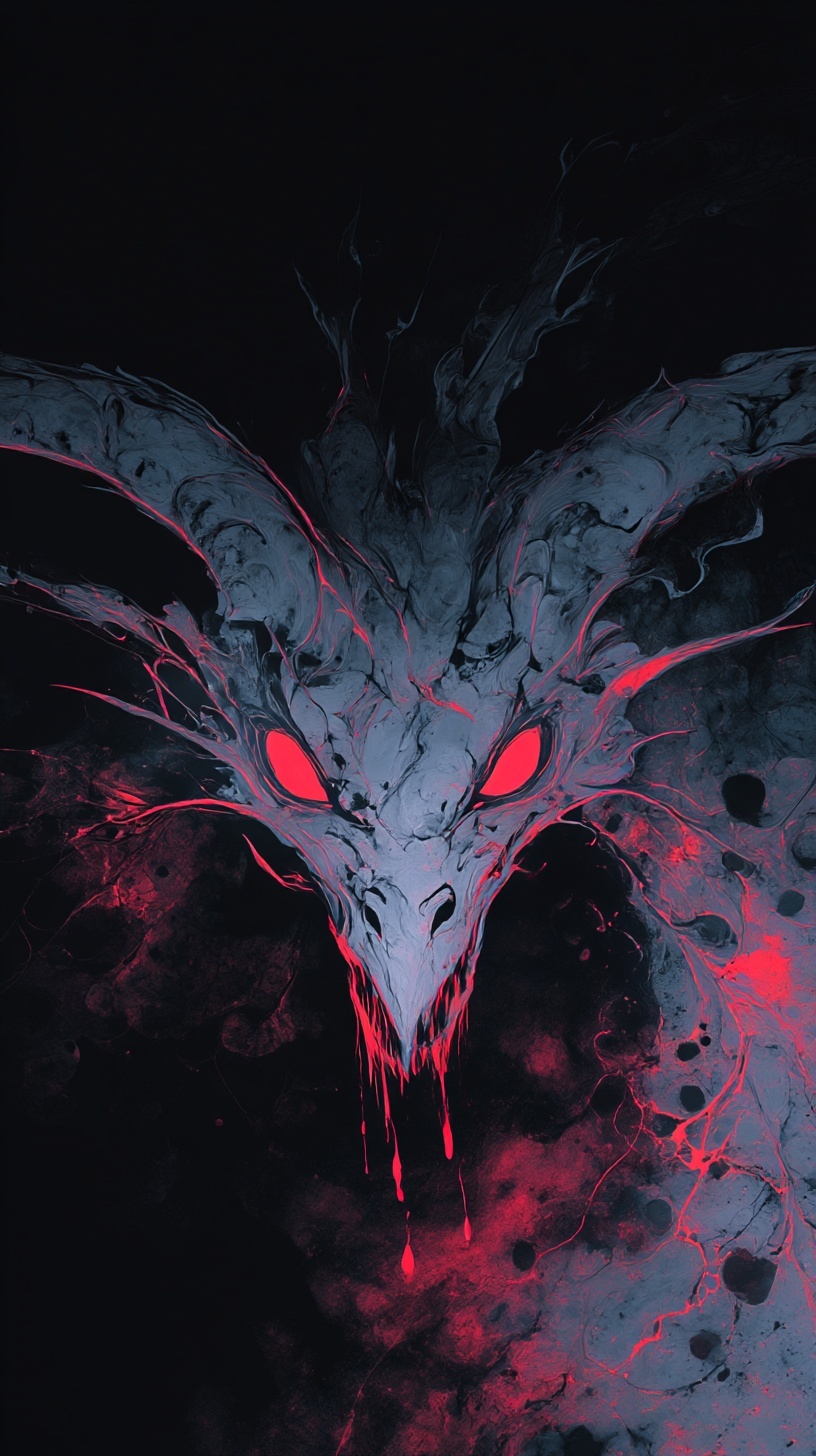
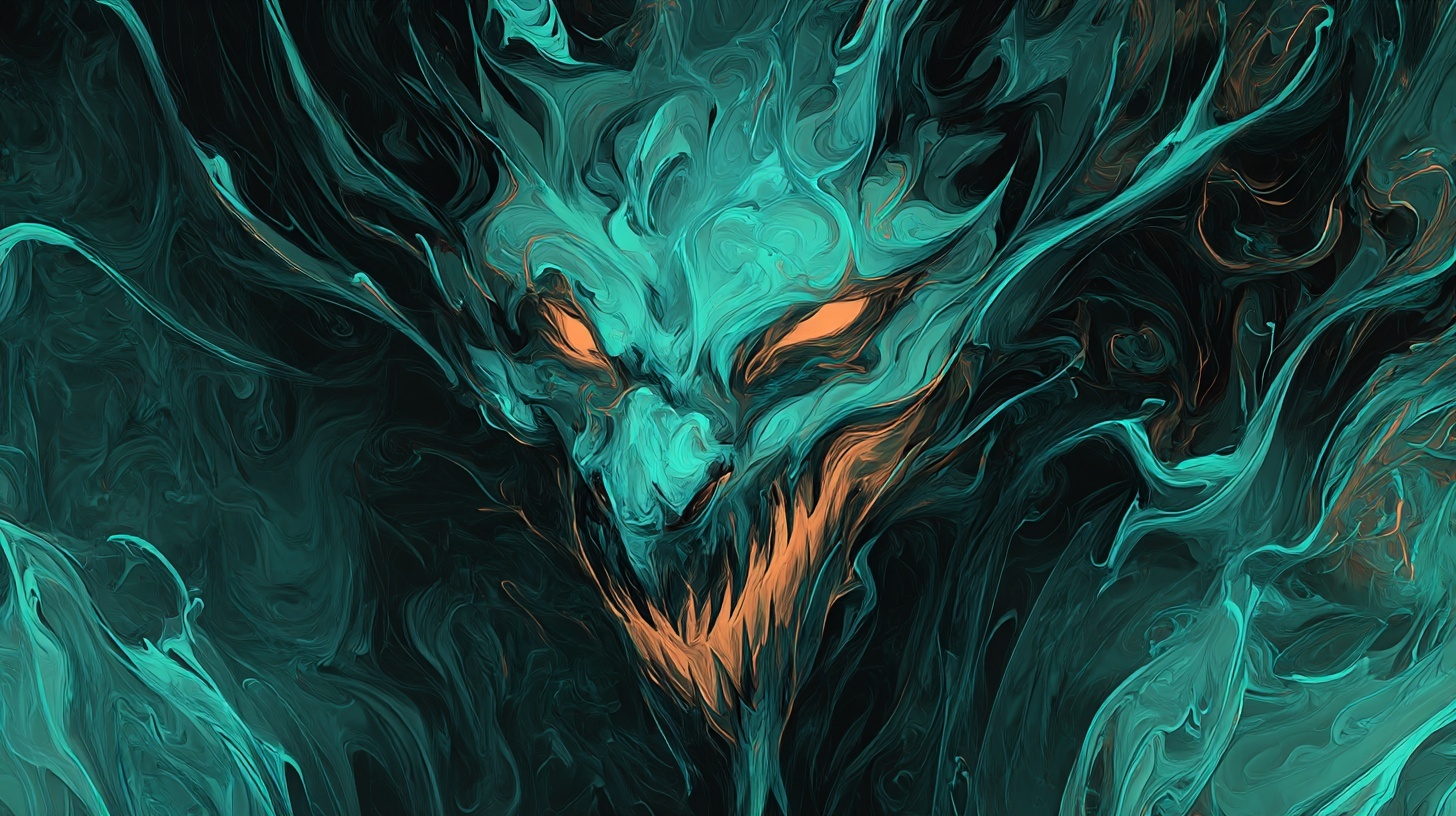
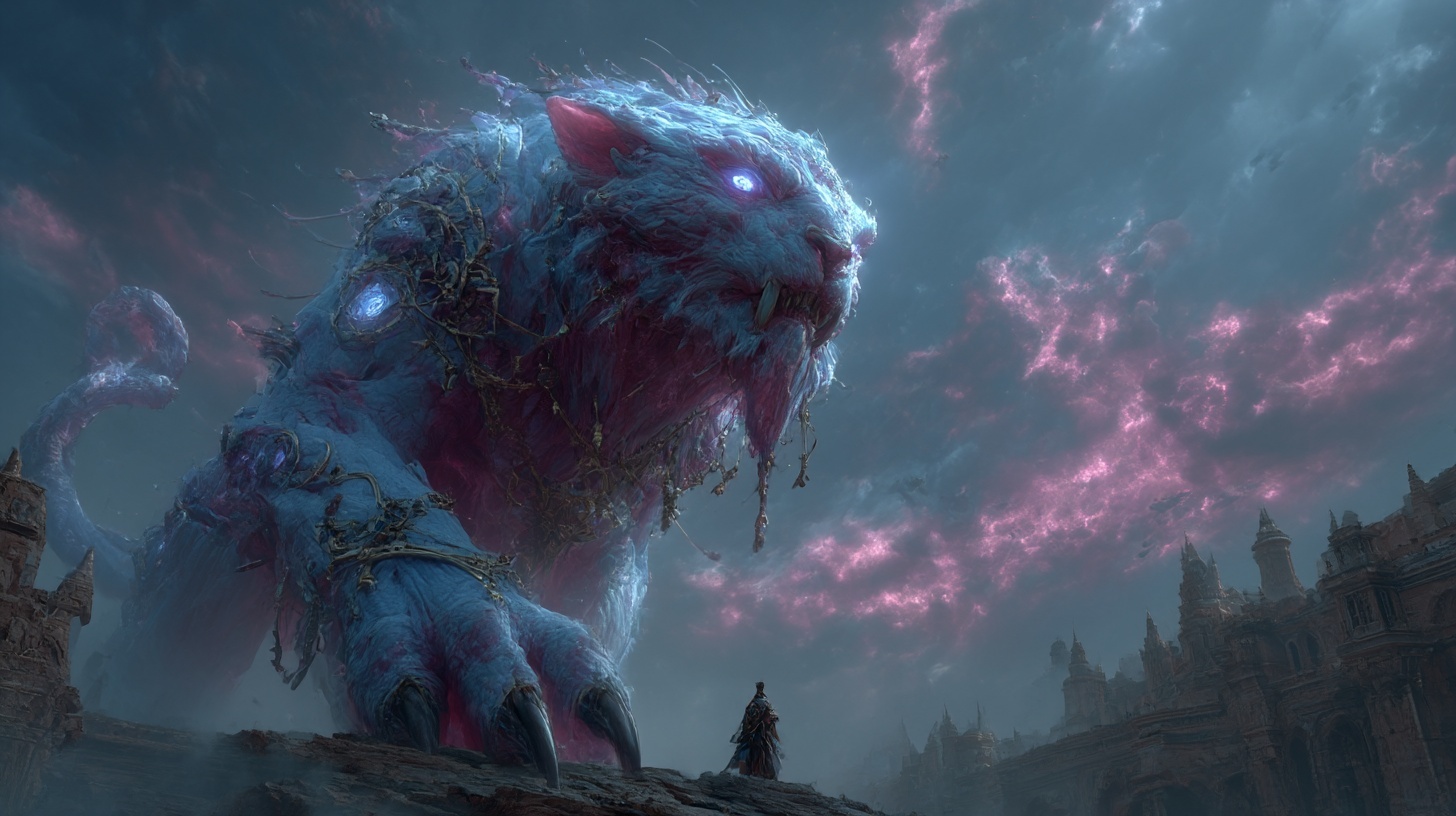

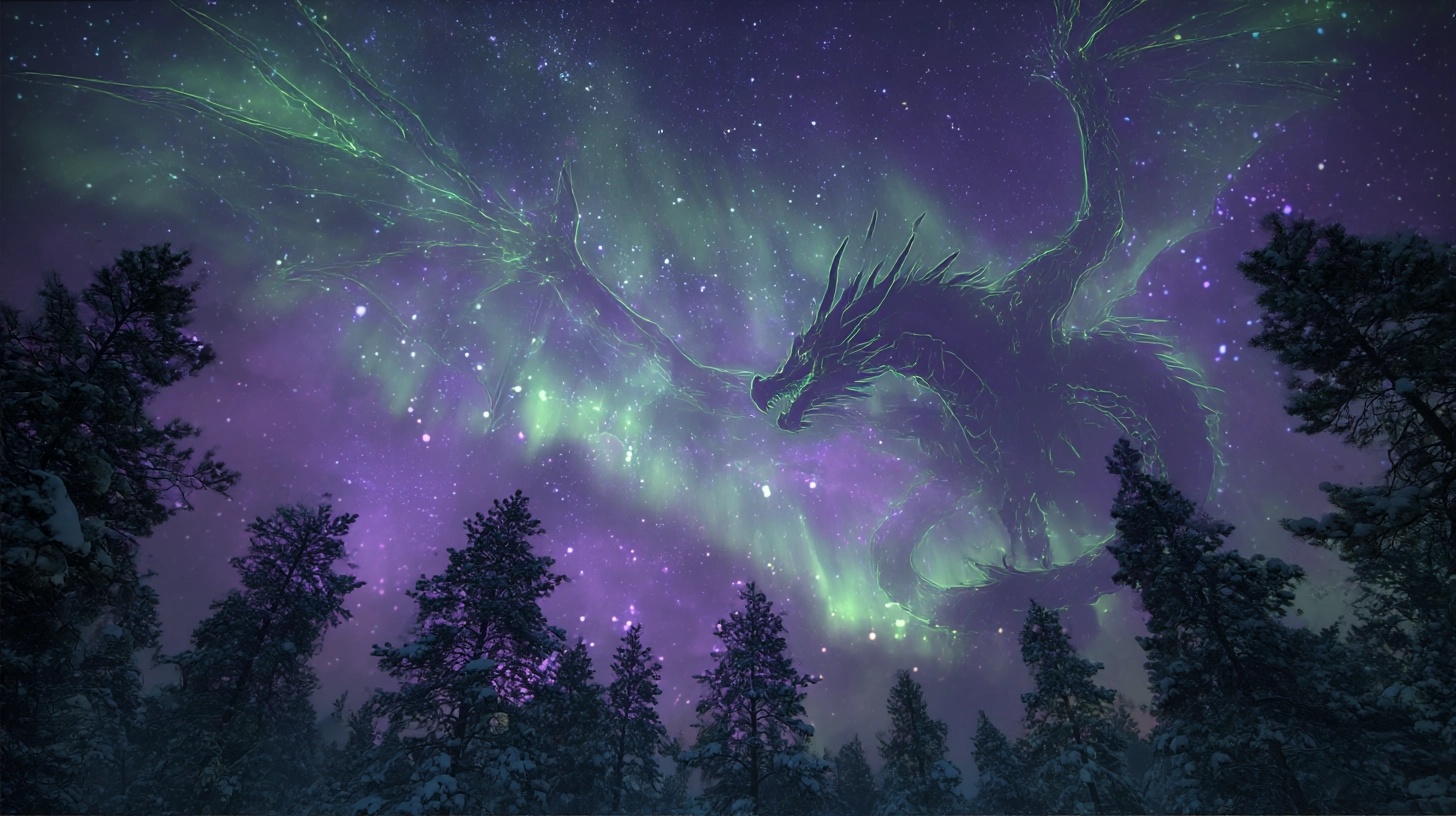

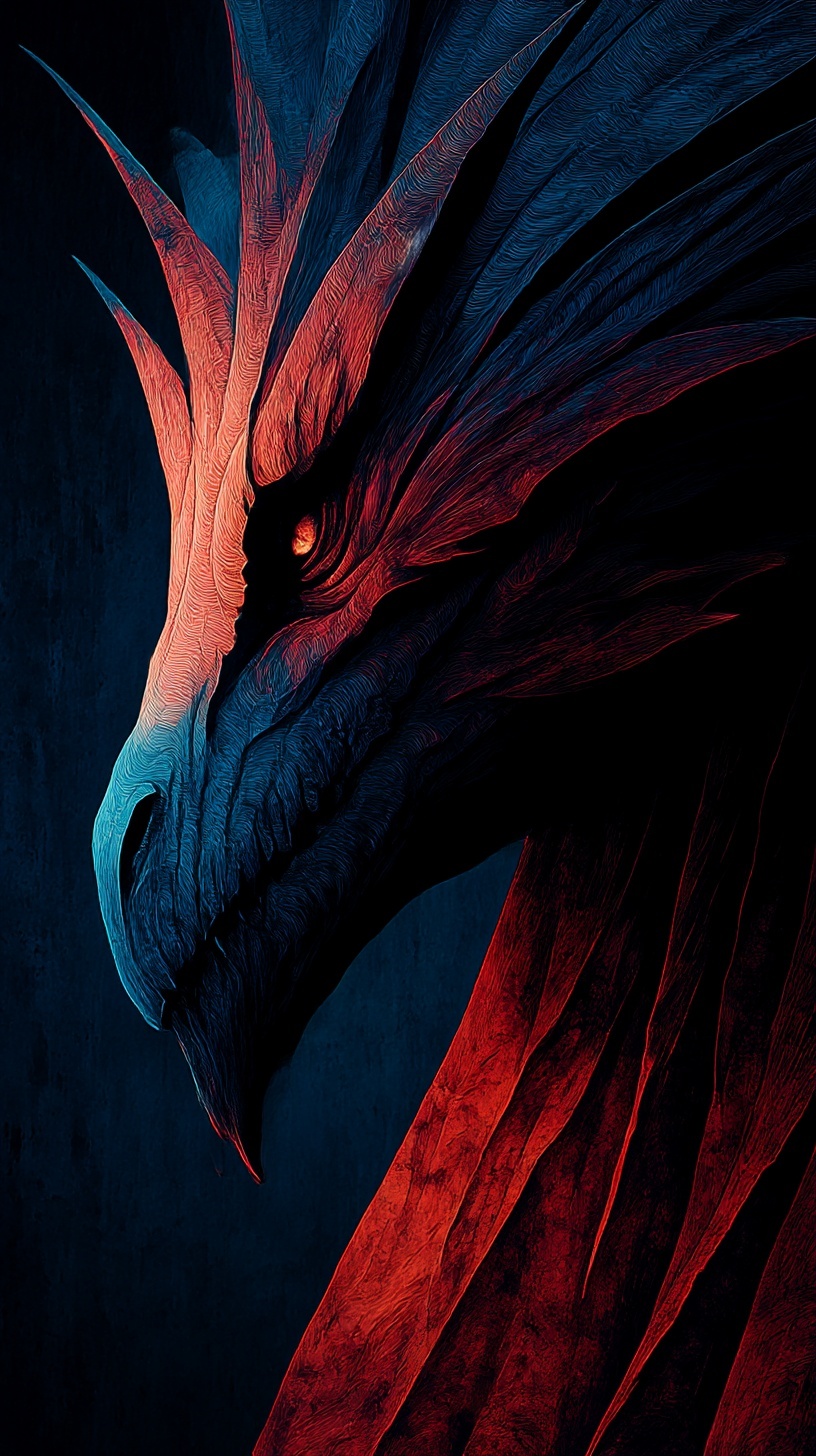

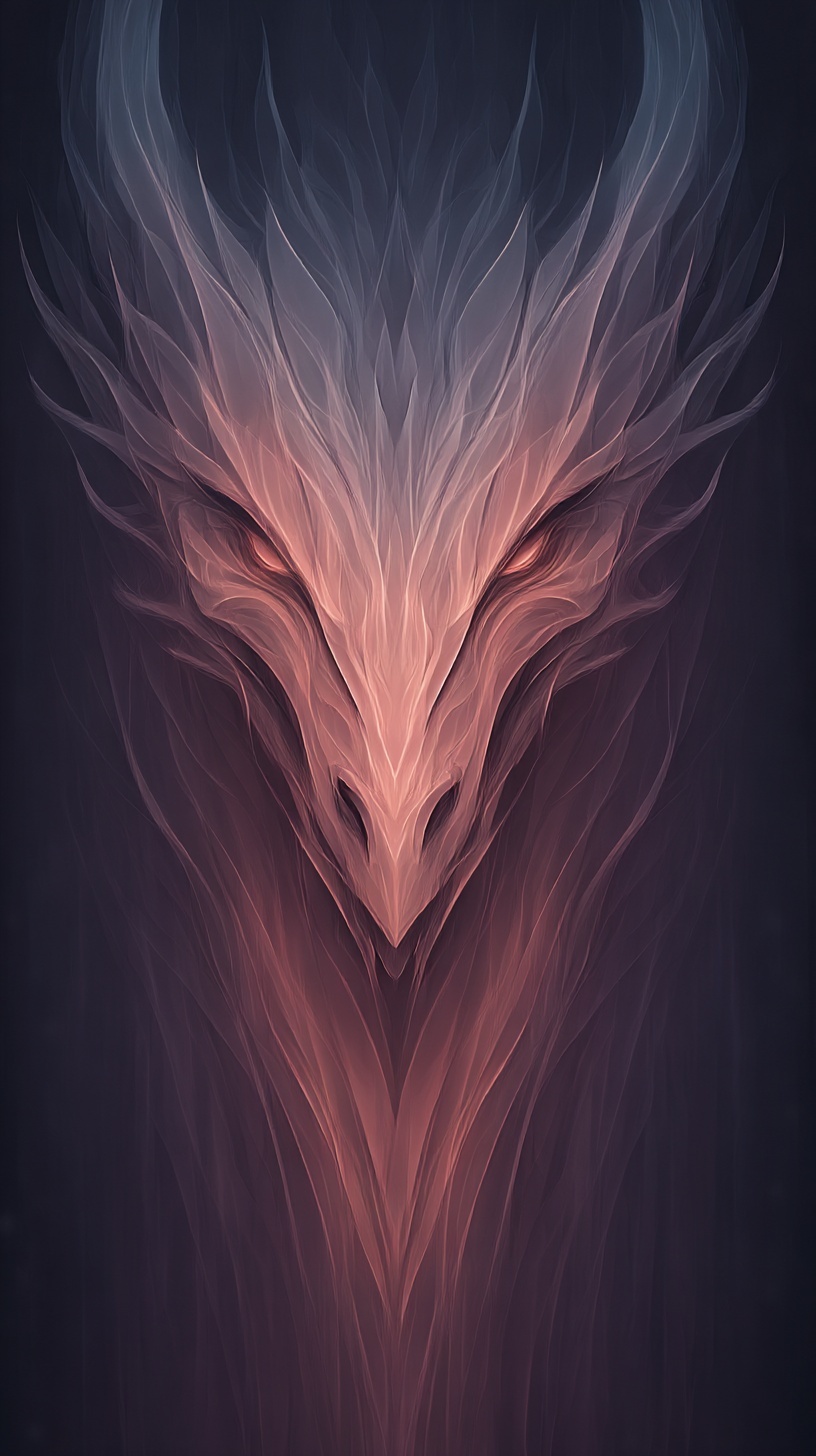


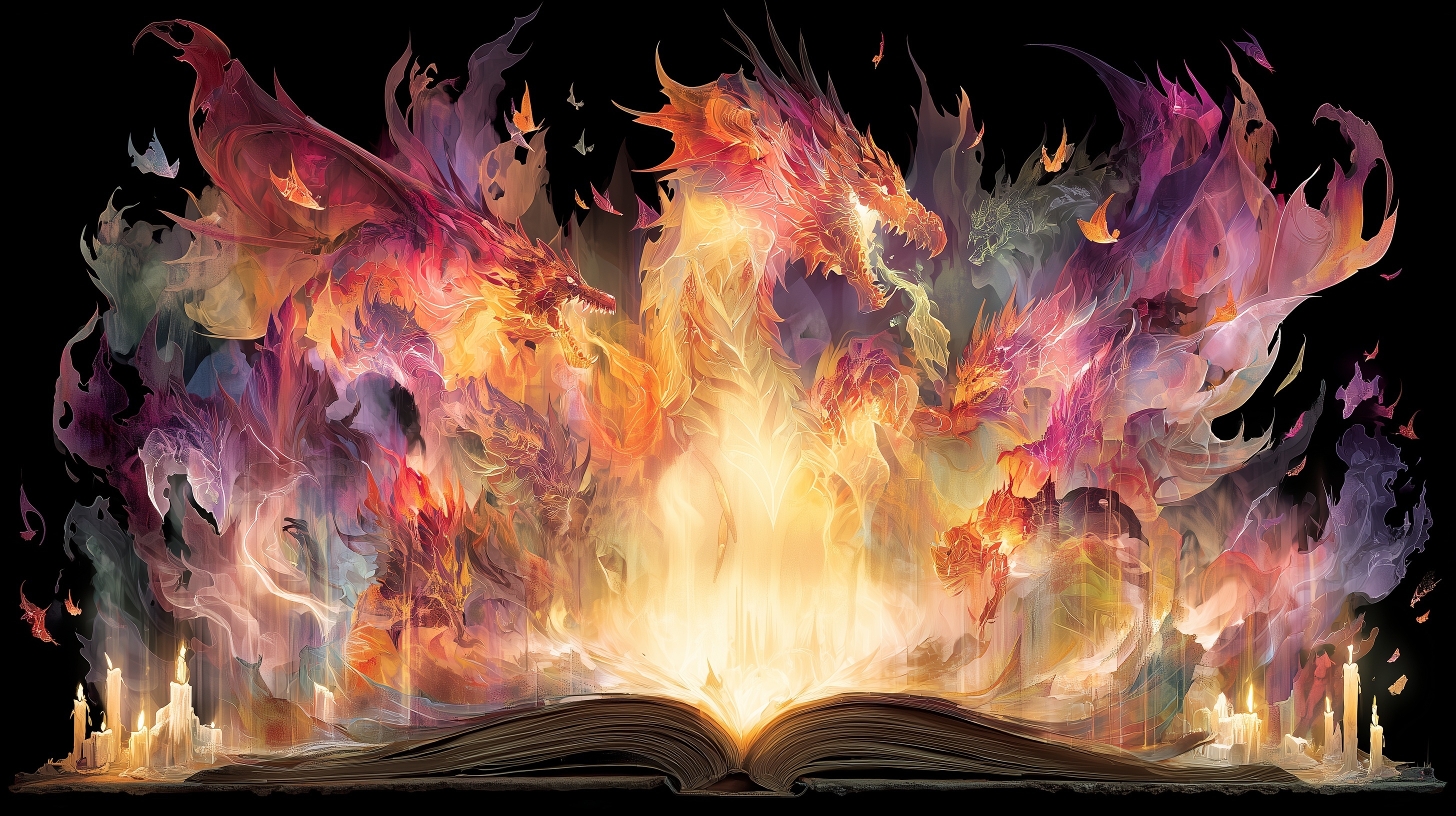
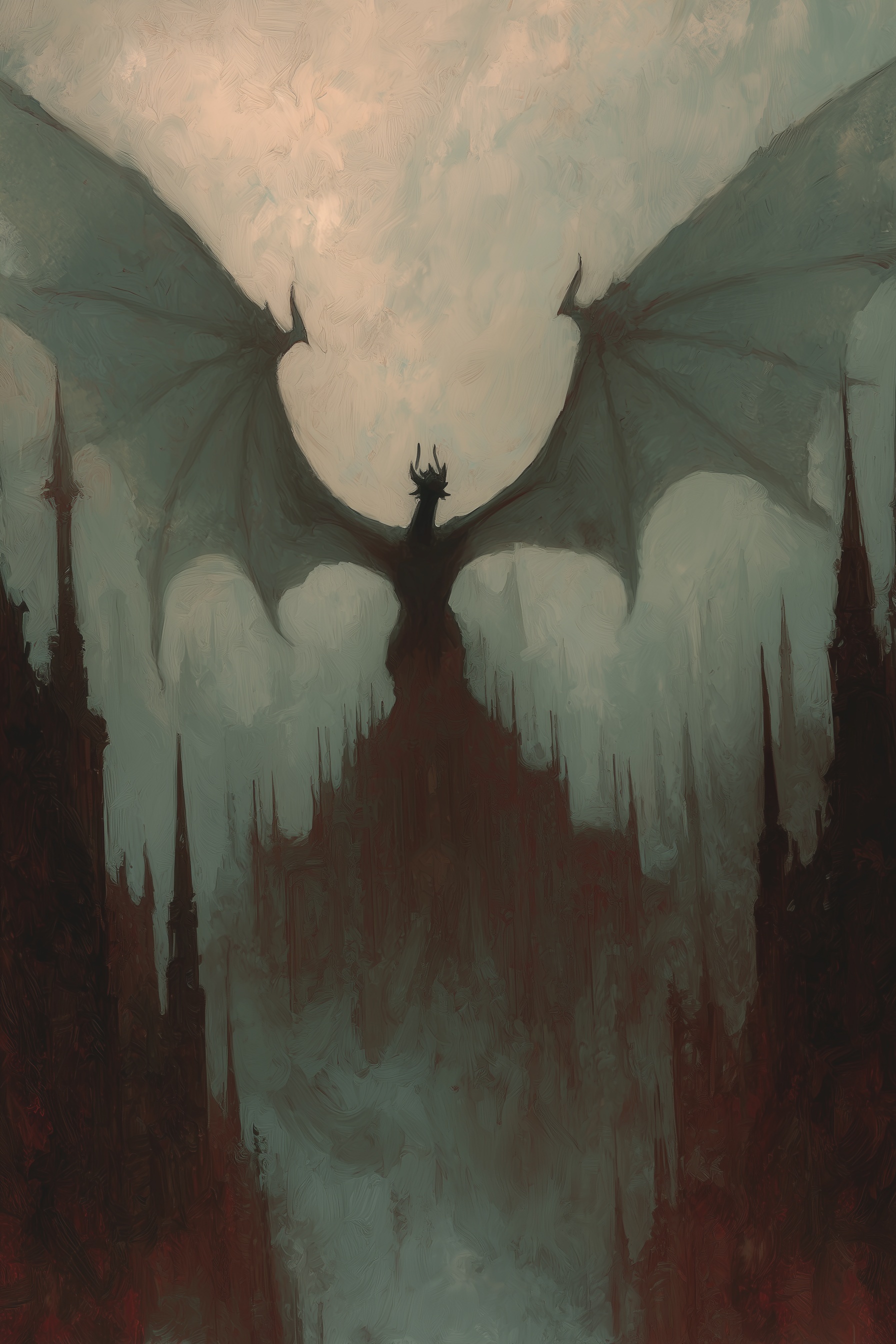
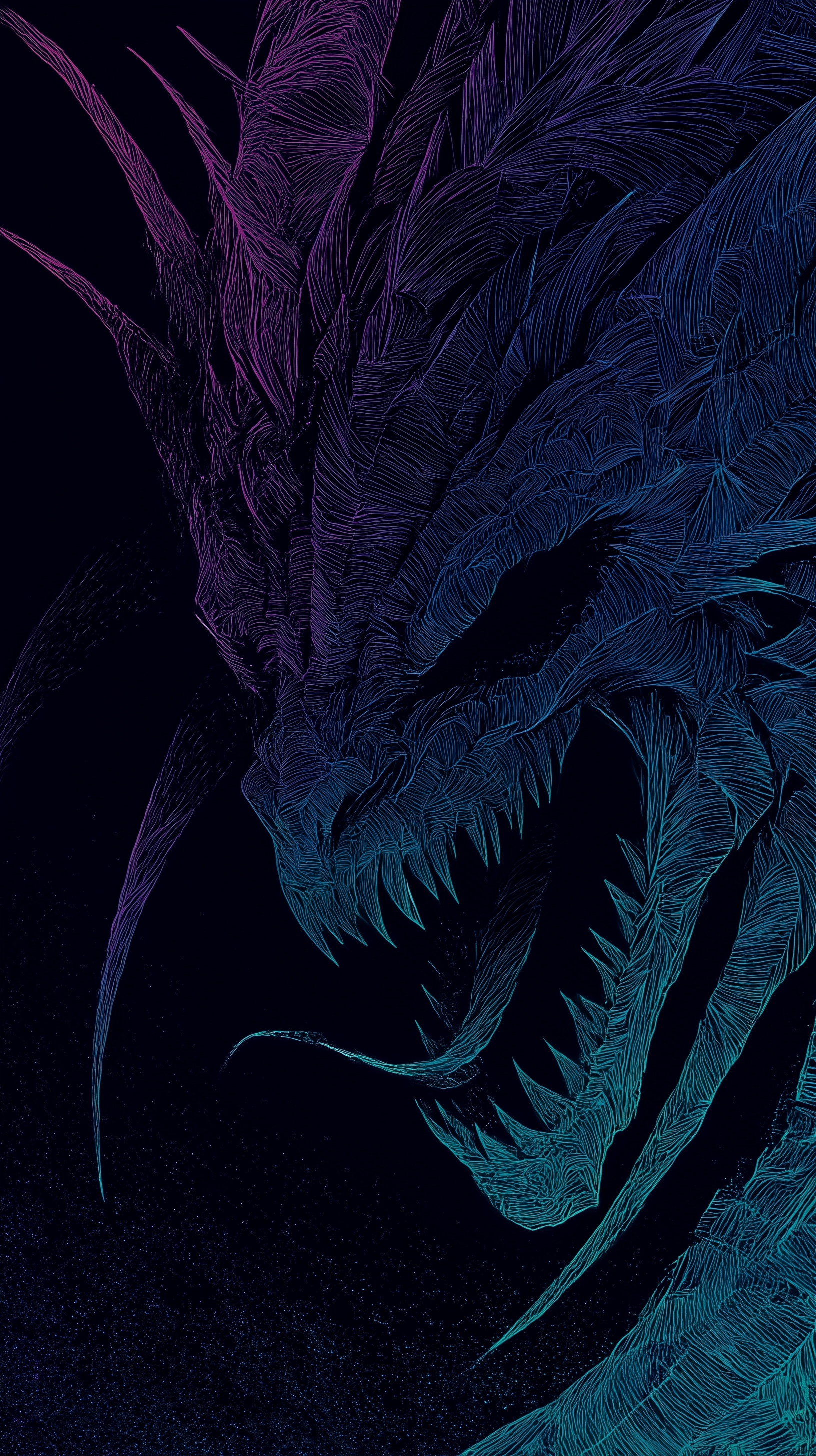



Comments